
No. 6, F-Block, Bandra Kurla Complex, TPS Road-12, Bandra-East, Mumbai-400051, Maharashtra Tel.No.: +91-22-26571713, 26571714, 61805600, Fax: +91-22-26572115, Email: contact@aiilsg.org




No. 6, F-Block, Bandra Kurla Complex, TPS Road-12, Bandra-East, Mumbai-400051, Maharashtra Tel.No.: +91-22-26571713, 26571714, 61805600, Fax: +91-22-26572115, Email: contact@aiilsg.org


A monthly magazine published by the AIILSG.
Ranjit Chavan President-AIILSG Dr Jairaj Phatak Editor-In-Chief Director General-AIILSG Ashok Wankhade Managing EditorAbhishek Pandey Editor
Ravi Ranjan Guru Executive Editor
Pushpender Singh Indrani Priyadarshini Shashank Garg Trainee Reporters
Arjun Singh Digital Marketing Associate
Meenakshi Rajput Art Director
Printed and published by Ranjit Chavan on behalf of All India Institute of Local Self-Government.
Printed at Artz & Printz, 208, DSIDC Shed, Okhla Industrial Area Phase-I New Delhi-110020
Published at Sardar Patel Bhavan, 22-23, Institutional Area D-Block Pankha Road, Janakpuri, Delhi-110058
Note: Subscriptions are only invited from municipal corporations, government bodies, academic & research institutions, etc. working in the domain of urban development. We only levy courier and handling charges. We may fully waive-off the charges for municipalities and academic institutions upon receiving such request and approval from our management.
Mail Box
Readers’ comments, criticism and suggestions are welcome. Letters to the Editor can be sent by e-mail, or regular mail. They should include name, address, phone number(s), and e-mail address, if available. The subject of the communication should be clearly mentioned, and we reserve the right to edit for sense, style, and space.
Urban Update (All India Institute of Local Self-Government) Sardar Patel Bhavan, 22-23, Institutional Area, D Block Pankha Road, Janakpuri, Delhi-110058
FOR SUBSCRIPTION AND ADVERTISING RELATED ASSISTANCE, CONTACT

Phone: 011 - 2852 1783/ 5473 (Extn. 37) E-mail: contacturbanupdate@gmail.com
Despite careful selection of sources, no responsibility can be taken for accuracy of the contents. The magazine assumes no liability or responsibility of any kind in connection with the information thereof. The views expressed in the articles are the personal opinions of the contributors and do not necessarily reflect the opinion of the All India Institute of Local Self-Government. All rights reserved. Reproduction in whole or in part is strictly prohibited without written permission from the publisher. The project is funded by the European Union. The project is


s always, at this time of the year we look back to see what the past year has been like, what impacts it had on society, and so on.
AAmong the most significant events of the year was the Russia – Ukraine conflict. It has been a prolonged and difficult engagement of forces on the two sides with several incidents of fierce fighting. The prolonged war has resulted in hardships to populations around the world mainly on account of supply chain disruptions affecting food supply and thus driving up prices of many food commodities, industrial inputs and raw materials. This in turn has resulted in sustained and stubborn high inflation almost all over the world; prompting central bankers to hike interest rates in their efforts to tame rising prices. One hopes that early in the new year, the situation will get back to normal and put an end to many difficulties.
India has been handed the mantle of G20 Presidency for the year starting December. India will look to make meaningful contribution to the well-being of the world on all fronts keeping in mind the Theme – One Earth, One Family, One Future. The theme will look to unite the members to particularly support environment friendly measures given the stark challenges facing populations in nearly all parts of the globe. Given the country’s praiseworthy achievements on several fronts including creating renewable energy capacities, India is well placed. In another landmark event, the COP27 Conference in Egypt brought to the fore the urgent need for equitable climate financing to support developing nations. Creating a fund for ‘loss and damage’ marked an important area of progress with all agreeing to bring this to the forefront of the agenda as a measure to address the impacts of climate change on vulnerable communities whose very lives and livelihoods have been impacted by its worst impacts.
In Indian cities, good progress has been made during the last several years on sanitation, waste management, water supply, affordable housing, etc. These themes will remain central as we move towards making our cities, efficient, vibrant, just and equitable to address the aspirations of the vast populations moving here in search of a better future for themselves and their families. Efficient sustainable urban mobility will remain a key theme in the efforts of policy makers. Given the worsening air quality in many large cities and the threat posed by it to public health, e-mobility and efficient, affordable mass transit must be the key pillars on which will rest our future efforts. Alongside, public health needs to be strengthened by means of significant investments including in strengthening manpower and capacity building. The free insurance scheme for the poor to provide free hospitalisation upto five lakhs per family per annum is a move in this direction and will protect millions from crippling out-ofpocket healthcare expenses. We can look with hope to further progress on many of these vital areas for a brighter future for all Indians.
I take this opportunity to wish our readers and their families a very happy new year 2023.
With global solidarity and bold leadership, we can make sure everyone receives the care they need. World AIDS Day is an opportunity to re-affirm and refocus on our shared commitment to end AIDS as a public health threat by 2030
Ghebreyesus Director-General, World Health Organisation


ADB supports the Government of Bhutan’s Water Flagship Program and the National Integrated Water Resources Management Plan to improve climate change resilience and water sector performance
Vikram Kirloskar Vice Chairman, Toyota Kirloskar Motor @vikramkirloskar

Tackling #climatechange is crucial. It is a critical strategic requirement that businesses must address to all cost, as a collectively responsibility
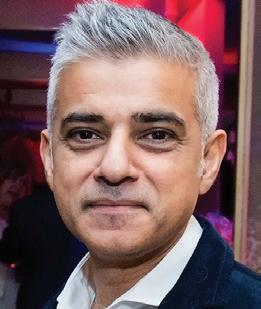
of Kenya @CJMarthaKoome
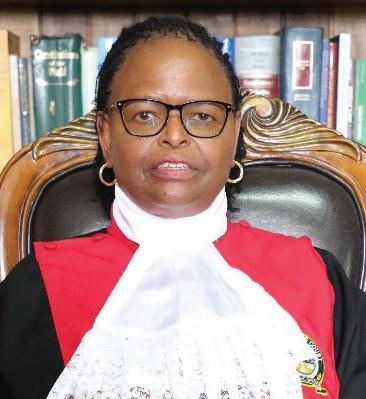
Environmental considerations are not only important for sustainable development but are also necessary for us to holistically address the plight of the vulnerable in our society
Together we can imagine a greener city—one where the air is safe to breathe, our streets are lush with trees, and our natural world is thriving
Bloomberg UN Special Envoy for Climate Ambition & Solutions @MikeBloomberg

The faster we can move away from fossil fuels, the faster we can improve public health &create jobs
G20 or Group of 20 is an international coalition of 20 countries which was formed in 1999 with an aim to maintain global economic stability. It started with a meeting of finance ministers and governors of central banks of seven countries. Enhancing economic and financial openness and bolstering financial systems was a key early accomplishment

Civil Society Organisations (CSO) are becoming increasingly important in the field of development. They’re an important link between state and people at the grassroot level. They are diverse in terms of organisational structure and culture as well as in terms of the issues they cover. Their involvement is seen in the formulation of public policies, implementation of governmental programmes, dialogues and even in the enforcement of social legislation. They play a vital role in encouraging local initiatives in terms of mobilisation and environment building. The local persons or the stakeholders can bring about meaningful change.
The rapid rise of CSOs/NonGovernmental Organisation (NGO) can be attributed to the rise of globalisation during 20 th Century. CSOs have evolved to emphasize humanitarian issues, developmental aid and sustainable development. A prominent example of this is the ‘World Social Forum’ which is a rival convention of World Economic Forum. The fifth World Social Forum in 2005 held in Brazil was attended by more than 1000 CSOs including from India. CSOs in India are shaped and influenced by a variety of factors. They are nurtured and threatened in turns as the dominant political outlook oscillates between liberalism and statism. Diverse in their functions and purposes, they serve primarily a vast and assorted population of informal workers. A sizeable sum from public and foreign sources is expended by this sector.
Without the participation of women in the development process, society as a whole cannot be said to develop holistically. India is one of the developing countries where the

societies are predominantly patriarchal in structure. Participation of women in economic activities is not even close to desirable.
Over the last decade, the role of NonGovernmental Organizations (NGOs) in development has been widely recognized. CSOs play a crucial role in mobilizing the local human and physical resources and creating appropriate entrepreneurial environment, thereby generating new opportunities. Their contribution to the microenterprise sector has led many state and central governments and other agencies to seek the support of CSOs to hasten the process of economic development. The CSOs have a huge role in stimulating and nurturing the spirit of entrepreneurship among women. An integrated approach is necessary for making the movement of women entrepreneurship a success.
The Girl Power Project outreach activities witnessed active participation of local CSOs which are continuously helping and supporting the women beneficiaries. Many CSOs are establishing direct contact with the women who want to setup an enterprise and want to become a successful social entrepreneur.
Girl Power Project, implemented by AIILSG in jharkhand and funded by the European Union, is striving to strengthen the ability of the Indian civil society organizations to perform their role as independent agents of change, implementing actions that bring transformative change into the lives of women and girls.

The project will foster the overall development and empowerment of CSOs working on women empowerment in the state of jharkhand. This project proposes to use a combination of training, skill building, network formation, policy dialogue and entrepreneurial support to achieve the objectives of the call. The project also meets the specific objectives in the order of priority. The project aims to provide women and girls with skill training and entrepreneurial support
centres. jharkhand Mahila Social Entrepreneurship Market Connect (jMSEMC) has been introduced under the project to act as a single point of contact for women and CSOs to connect them with prospective buyers in the marketplace.
This is how the Girl Power Project provides catalytic support of CSOs in promoting women entrepreneurship:
♦ Conducting skill training programmes for the target beneficiaries with a view to create enterprising attitude among them.
♦ Conducting entrepreneurship development programmes to support the women.
♦ Offering counselling and advisory services is one of the major aspects of the project. Legal support is also provided to the ones who need it.
♦ Assisting the target group in market linkage of their products and helping them get loans from financial institutions. Providing handholding support post the training is as important as quality skill training.
Girl Power Project is imparting training to women beneficiaries in specified subjects with the help of CSOs to create entrepreneurship among the beneficiaries. After
combination of training, skill building, network formation, policy dialogue and entrepreneurial support, many women beneficiaries are establishing enterprises for their livelihood. Marketing support is also provided for showcasing and selling of their products in different occasions and platform.
The Role of CSOs in entrepreneurship development cannot be undermined. Several CSOs in different parts of India have succeeded in imparting entrepreneurial skills among the marginalised section with special reference to women in India.
The training programmes conducted by the Girl Power Project will improve efficiency of women beneficiaries by educating them on how they make use of resources available to them in efficient and balanced way. Training programme will lead to skilled behaviour and pave the way for selfemployment opportunity among the beneficiaries to promote women entrepreneurship.
Women in rural areas are at an enormous disadvantage, given their limited access to the resources available and male members of the family being the decision makers. These training programmes give an opportunity to them to become financially independent. Especially after the pandemic, rural population which largely survives on daily-wages was badly affected.
This has helped women to improve their socio-economic status. Further, starting their own venture becomes difficult in rural areas because of limited awareness and access especially to technology, but training programmes conducted under Girl Power Project have given them a hope to start their business or expand the venture which has helped them in not only enhancing their technical capacity as entrepreneurs but also improve their socio-economic status.
First state level workshop oganised by AIILSG in collaboration with the Government of Haryana under the Atal Bhujal Yojana - Haryana
Japan Council of Local Authorities for International Relations, JCLAIR team visited AIILSG Delhi office. AIILSG and JCLAIR mutually agreed on various projects including the JET programme, Japan Exchange program and several other training initiatives

Kerala cell of ECBC organised a one-day training program for Kerala Government Contractors Association in November 2022, on ‘ECBC and ENS Awareness’ (Physical) at the Energy Management Centre, Kerala

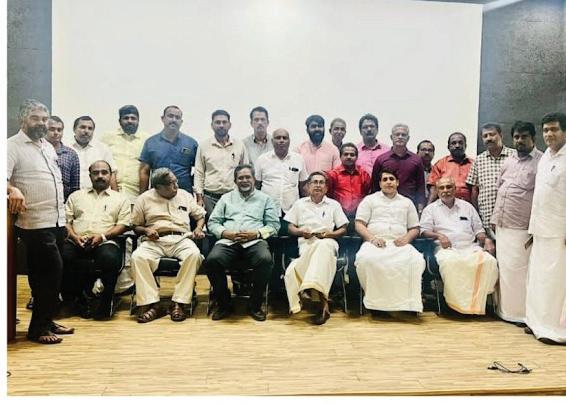

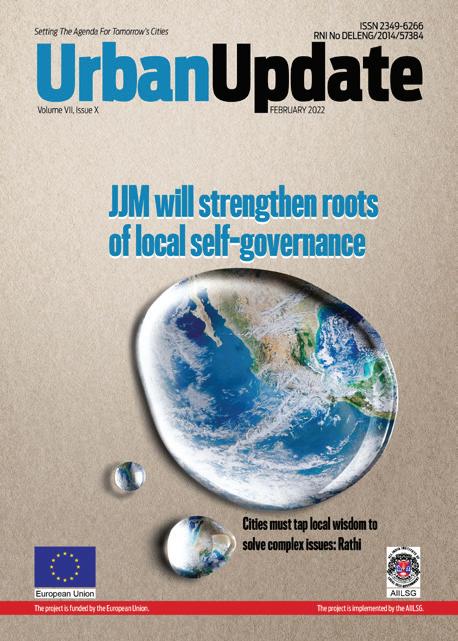









THIRUVANANTHAPURAM, Kerala:
The Government of Kerala will be appointing young professionals in urban local bodies (ULBs) to ensure effective implementation of activities related to sanitation and waste management in cities.
A total of 99 young professionals with qualification of Bachelor of Technology (BTech) or Masters in Business administration (MBA) or Master of Social Work (MSW) will be appointed in ULBs across the state. In addition to this, a documentation specialist with graduation in Mass Communication will be appointed in the Suchita Mission State office.
M B Rajesh, Minister for Local Self-Government, Government of Kerala, said that the appointments of
these young professionals would be through the Centre for Management Development (CMD) and on contract basis for a term of three years. This will improve sanitation activities and will be a crucial step for a clean Kerala.
He further added the state government is working towards addressing sanitation and waste management issues and the implementation of new models to handle solid and liquid waste, as well as construction and demolition waste by 2026.
Due to the merger of various departments under the local selfgovernment common service, environmental engineers and clean city managers are being appointed in all the corporations.
NEW DELHI: Driven by the underlying vision of ‘Vasudhaiva Kutumbakam’ (the world is one family), India assumed the G20 presidency, the world’s most influential economic multilateral forum, on December 1, 2022, with a focus on counter-terrorism and “unity” in tackling global challenges like climate change and economic slowdown. During this one year of presidency, India will hold around 200 meetings across 50 cities in India involving civil society, ministers, and officials leading to a marquee summit in New Delhi in September 2023.
Prime Minister of India Narendra Modi stated in his blog post that India’s agenda for the Think 20 (G20) will be ‘inclusive, ambitious and action-
oriented.’ He asked the countries to come together and make India’s G20 presidency ‘a presidency of healing, harmony and hope.’ He further called for global cooperation to deal with global issues and stated that the challenges of climate change, terrorism and pandemic can be solved not by fighting with one another, but only through acting together. He underlined a need to “depoliticise the global supply of food, fertilizers and medical products, so that geo-political tensions do not lead to humanitarian crises.”
He further wrote regarding India’s reform story that the nation will share its experiences, learnings and models with the developing countries as templates.
Much awaited Municipal Corporation Delhi (MCD) poll results were declared with Arvind Kejriwal-led political party, Aam Aadmi Party (AAP) winning 134 out of 250 seats on December 7. The high-stakes MCD elections were held on December 4, 2022, with a total of 1,349 candidates contesting for 250 wards. This was the first election held after three civic bodies were unified this year. Putting an end to the Bharatiya Janata Party’s (BJP) 15-year long stint in Delhi’s civic body, Chief Minister of Delhi Arvind Kejriwal, stated, “I congratulate the people of Delhi for this win and thank them for bringing change.”
Under the state-funded flagship scheme Mukhyamantri Karma Tatpara Abhiyan (MUKTA), Chief Minister of Odisha Naveen Patnaik will approve action plans in each urban local body to ensure basic amenities in 2,055 wards’ offices of 115 urban local bodies (ULBs). A review meeting was conducted to focus on the ward-wise annual action plan for 2023-24, under the chairmanship of G Mathivathanan, Principal Secretary of Housing and Urban Development, Government of Odisha. In the meeting, ULB officials were asked to submit action plans that are low cost and demand driven, sustainable, technically doable and labour oriented.


(PPP) begins in the Municipal Corporation of Faridabad (MCF), and all the properties are expected to be linked with PPP within two months. There are a total of 5.75 lakh identified properties within the territorial limits of MCF. As per the statement of a senior official, the civic body has been facing several issues regarding the recovery of taxes, including house tax and water and sewerage connection charges. So, in order to identify the defaulters, the local body has begun the property linking exercise.
KOLKATA, West Bengal: Firhad Hakim, Minister for Urban Development and Mayor of Kolkata, said that the violators of plastic ban norms will be penalised while, on the other hand, entrepreneurs will be encouraged to solve this plastic menace. While talking to The Plurals, Hakim said, “We will soon impose fines and lodge cases against (plastic norm) violators in the Kolkata Municipal Corporation (KMC) area and gradually extend it to other municipalities.”
As per the report published by the environmental think tank, Centre for Science and Environment (CSE), in West Bengal, around 2 lakh tonnes of
plastic waste remained unprocessed and was left to pollute the environment during 2019-20. The report also stated that the state generated 3 lakh tonnes of plastic waste during the same period, out of which only 39,091 tonnes (13 per cent) were recycled and 60,047 tonnes (20 per cent), were burnt legally. The rest were either disposed of or burnt illegally. In terms of the quantity of illegally disposed of plastic waste, West Bengal stood in fifth place. Maharashtra tops the list with 2.9 lakh tonnes, followed by Tamil Nadu. Gujarat is third from the last, followed by Telangana in the category of “total plastic waste left” without treatment.

The Government of Andhra Pradesh has issued a notification regarding the effective implementation and enforcement of Plastic Waste Management Rules, 2016 (PWMR). The notification also asks authorities to take strict action against the violators of these norms. The notification mentioned that companies caught importing and manufacturing banned plastic would have to pay a fine of `50,000. If caught again, the registration of the same will be cancelled in addition to a fine of `11 lakh by the SPCB. Based on the category of offence, fines to be imposed against offenders by the officials of rural and urban local bodies will be between `2,500 and `50,000.
BHUBANESWAR, Odisha: On the occasion of World Soil Day, on December 5, the ‘Youth4WaterIndia’ campaign has launched a “Plastic-Free Picnic Challenge” among youth in the state of Odisha. The water man of Odisha, Ranjan Panda, Co-founder of the Youth4Water campaign, informed that the challenge starts on December 5, 2022, and will conclude on January 1, 2023. Under this challenge, youth visiting forests and water bodies for picnics will be urged not to use singleuse plastic items and clean up the sites of all the non-biodegradable wastes after their picnic ends. Panda further informed that the ‘Youth4Water’
campaign was flagged off at the 3rd Odisha River Conference organised by Water Initiatives and partner organisations at Baripada in March 2019. He added, “It has now reached out to thousands of youth directly and lakhs of them through online platforms. We have now decided to call this campaign ‘Youth4WaterIndia’ as partners from other states have also shown interest to join this initiative.”
Anurag Gupta, State Programme Director, WaterAid India, a partner of the campaign, said that the aim of this programme is to reach out to thousands of youths with the message of conservation of our natural spots.
‘Youth4WaterIndia’
Property linking with Parivar Pehchan Patra begins in MCF
The exercise to link properties with Parivar Pehchan Patra
AP notifies authorities to penalise PWMR violators
NEW DELHI: India gets its first Dugong Conservation Reserve in Palk Bay, Tamil Nadu. The Reserve covers the coastal waters of Thanjavur and Pudukottai districts with an area of 448 square kilometres. Since there are only 240 individuals present in the coastal region of Tamil Nadu, there is an imminent need to protect them and their habitat.


NEW DELHI: ‘Break Free From Plastic’ group’s global brand audit assessment finding says Coca-Cola is the worst plastic polluter amongst the major brands for five years in a row. Apart from PepsiCo, India’s top plastic polluters are CG Foods India Pvt Ltd – makers of Wai Wai noodles and Perfetti Van Melle, Makers of Mentos, Alpenliebe and ChupaChups lollipops.
THIRUVANANTHAPURAM: The council of Thiruvananthapuram Corporation has passed the Draft Master Plan 2040 for laying out the development plans for the next two decades. Based on proposed and existing land use patterns, the new draft divides the city into two zones, which are further sub-divided into 25 zones.
Light-up bicycle campaign organised by Green Pencil Foundation
HYDERABAD: Light-up bicycle campaign has been launched by the Green Pencil Foundation in Hyderabad which will work on climate change, menstrual health and slum education in various suburbs. The campaign also aims to work in the field of mental health.

Unified Delhi MCD to have 250 wards
NEW DELHI: The Ministry of Home Affairs, Government of India, has notified the draft to alter the existing boundaries of wards of the Municipal Corporation of Delhi. The draft has been published on the website of the State Election Commission of Delhi to seek the general public’s opinion on this matter.
NEW DELHI: The Government of Haryana has decided to evaluate the progress of different works in all its districts by developing a mechanism by giving special attention to any block that is found to be lagging in progress. About 10 parameters have been identified and will be focused on generating the spirit of competition among the government bodies to deliver their best.
The World observes ‘World Tsunami Awareness Day’ on Nov 5

EL-SHEIKH:
BASIC group,
have come together at the 27th Conference of Parties (COP27) to oppose the concept of carbon border tax, stating that this could result in market distortion and cause trust deficit among the parties. They issued a joint statement highlighting lack of leadership efforts from the developed nations as they are responsible for much of the greenhouse gas emissions.
UNITED NATIONS: The UN General Assembly declared November 5 as World Tsunami Awareness Day in December 2015 after adopting the successor of Hyogo Framework, known as the Sendai Framework and encouraging nations, international organisations, and civil society to spread tsunami awareness and exchange creative risk-reduction strategies.


HYDERABAD: Hyderabad is the only Indian city to win the overall ‘World Green City Award 2022’ and ‘Living Green for Economic Recovery and Inclusive Growth’ at the International Association of Horticulture Producers (AIPH) World Green City Awards 2022, held in South Korea. The state is focusing on implementing large-scale tree plantation and urban development programs.
MUMBAI: Robots will be used for cleaning manholes across Mumbai. The announcement came during the inauguration of the Clean Maharashtra Mission 2.0. Urban local bodies across Maharashtra gathered to showcase their cleaning and safety equipment that is being used for sanitation. The Bandicoot developed by Genrobotics was the key highlight of the exhibition.
NGT fines Delhi Govt Rs 900 cr for failing in waste management
NEW DELHI: The National Green Tribunal (NGT) has imposed a fine of `900 crore on Delhi government as environmental compensation for failing in the management of municipal solid waste. These landfill sites cumulatively hold 300 lakh metric tonnes of waste.
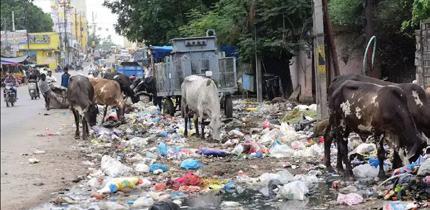
THIRUVANANTHAPURAM: The Government of Kerala has decided to set up safe shelters for women as part of the ‘EnteKoodu’ scheme which is a larger project launched by Social Justice Department, Kerala to provide night shelter to those living on the streets. A mobile app will also be available for registration and details of the facilities.
NEW DELHI: The Department of Expenditure under the Ministry of Finance, Government of India, has released funds to four Indian states worth `1,764 crore for the development of Million-Plus Cities. The states which have been granted funding are Andhra Pradesh (`1.36 billion), Maharashtra (`7.99 billion), Chhattisgarh (`1.09 billion), and Uttar Pradesh (`7. 20 billion).

BENGALURU: In the Public Affairs Index (PAI) 2022 rankings, released by Public Affairs Centre (PAC), Karnataka ranks sixth on the performance in the field of governance based on 22 indicators grouped into three themes: economic justice, political justice and social justice. Haryana, Tamil Nadu and Kerala were the top three performers in this index.
NEW DELHI: According to a World Wildlife Fund (WWF) report, the world’s wildlife populations have decreased by more than two-thirds since 1970 as a result of deforestation and ocean pollution. Delegates around the world will assemble in Montreal in December to chalk out a new global action plan to safeguard the planet’s flora and animals.

City firm develops low-cost water body clean up installation; emerges winner in clean water body challenge
BENGALURU: City based private firm AlphaMERS Ltd won the ‘Cleaning and Restoring India’s Water Bodies Challenge’ conducted by the Office of the Principal Scientific Advisor (PSA) to the Government of India. The firm developed a Floating Trash Barrier (FTB) which uses natural flow of water to bring trash to the riverbank and then the trash is removed manually.
BHUBANESWAR: The Bhubaneswar Municipal Corporation (BMC) issued an order to all the waste generators under its jurisdiction to keep two proper sized dustbins within their premises and store dry and wet waste in separate dustbins, failing will lead to a penalty of `5000.
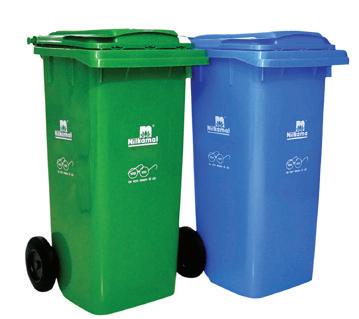
BHUBANESWAR: Odisha has been awarded the prestigious Pradhan Mantri Awas YojanaUrban (PMAY-U) Award 2021, for ‘Best Policy Initiatives by State’ under the special category during the ‘Indian Urban Housing Conclave’ event. The Odisha Urban Housing Mission and Jaga Mission worked closely to ensure land rights and housing available to slum dwellers.
Bhubaneswar to fine violators of two-dustbins rule
NEW DELHI: Hardeep Singh Puri, Minister of Housing and Urban Affairs, Government of India, said that 16 crore metric tonnes (MT) of legacy waste, taking up 15,000 acres of prime land will be remediated through a capacity-building initiative called Samvad within the mission period that is by 2026.

LAKHIMPUR: On the occasion of Amrit Sarovar Mahotsav, Rahdhala Pukhuri of North Lakhimpur town has won the best water body title. Radhala Pukhuri bagged 766.87 marks out of 100, Nabakhuruj Puthibhoral under Rangia Municipal Board secured 66.12 marks and Rajbari Pukhuri of Abhayapuri municipal board secured 64.75 marks.
NEW DELHI: The New Delhi Municipal Council (NDMC) is planning to hike the penalty amount from `500 to `5,000 on mosquito breeding to ensure compliance from the people regarding the prevention of mosquito breeding norms in Delhi. In case of consecutive offence, the penalty will be increased to `200 per visit as opposed to the earlier one of `20.

JAMSHEDPUR: Jharkhand gets another biodiversity park in the industrial city of Jamshedpur –Kadma Biodiversity Park. Spread over 13 acres of land, 5,650 trees have already been planted and several clusters of native species of trees planted as groves. The park has been developed with 4,650 types of shrubs on a 1,600 square meter grass area.
NEW DELHI: As the Yamuna’s water level reached the ‘danger mark’, over 5,500 people were relocated from low-lying districts close to the Yamuna floodplains to temporary tents, community centres, and schools. The river’s flow in Delhi is impacted by water discharged from the Hathnikund barrage in Haryana.
GUWAHATI: A survey report released by IIT Guwahati and IIT Mandi identifies fifteen of India’s 25 districts of Assam as most vulnerable to climate change. The government had launched Chief Minister’s Institutional Plantation Programme to enhance carbon stock

through the plantation drive and create awareness of climate change mitigation.
HYDERABAD: A comprehensive plan to link the four largest lakes in the region has been taken up by the Strategic Nala Development Programme (SNDP) and Hyderabad Metropolitan Development Authority (HMDA) to prevent flooding during periods of heavy rain in low-lying sections of Urban Local Bodies (ULBs).
NEW DELHI: The Cabinet meeting chaired by Prime Minister Narendra Modi, approved PM SHRI Schools (PM Schools for Rising India), a new centrally sponsored scheme,
to upgrade more than 14,500 schools across the country. It is to follow all the components of the National Education Policy 2020, and offer mentorship to other schools in its vicinity.
WARANGAL: The City of Warangal is now a part of UNESCO’s prestigious Global Network of Learning Cities (GNLC) for its efforts to make learning a reality for all its citizens. Other than Warangal, 76 other cities spread across 44 countries have been included in this global network.
PUNE: The Pune Municipal Corporation (PMC) is planning to construct 15 VIP public toilets in Pune at the estimated cost of `36 Lakhs. These toilets will have
vending machines, paper napkins, sanitary napkins and disposal machines. These toilets will also have shower facilities. The PMC initiated the tender process for these toilets.
Hyderabad ULBs work to make the city flood resistant
PM SHRI schools: A new scheme to upgrade government schools
PMC to build 15 VIP public toilets worth `36 lakhs
Yamuna level breaches the danger mark, residents evacuated
Warangal now a part of UNESCO learning cities network
Report identifies 15 Assam districts as most vulnerable to Climate Change
New Delhi: The Municipal Corporation of Delhi (MCD), in its statement on August 25, said that it has received an order from private entities for utilising approximately 10,500 tonnes of construction and demolition waste from the landfill sites. Over 8421 tonnes have already been removed from the landfill sites out of a total order of 10,500 tonnes.
BMC’s performance dismal in property tax collection: CAG audit
MUMBAI: The Comptroller and Auditor General (CAG) of India criticised the Greater Mumbai Municipal Corporation (BMC) for its appalling performance in collecting property tax. CAG report highlighted that Mumbai’s effectiveness in collecting property taxes is only 28 per cent, below the average rate of 53 per cent for other urban local bodies.

NEW DELHI: The state of California has come up with a plant to ban the sale of gasoline-powered cars by the start of the year 2035. Since the state is at the centre of the US car culture, a complete ban on gas-powered automobiles will lead the automakers to focus more on cleaner energy until the sale of only zero-emission cars.
NEW DELHI: The Smart Cities Council India organized its seventh Smart Urbanation event in Mumbai on August 26. The event recognized various smart city projects that have shown highly innovative strategies, ideas, and projects to make cities of the country more livable, sustainable, and economically viable.
Odisha: Focus on green energy in Renewable Energy Policy 2022-30
BHUBANESWAR: In keeping with Govt of Odisha’s plan for a new Renewable Energy policy for 2022-30, International Forum for Environment, Sustainability and Technology started a dialogue to prepare a roadmap stressing green energy.
Goa, Dadra & Nagar Haveli & Daman & Diu become 1st ‘Har Ghar Jal’ certified state and UT
NEW DELHI: Goa and Dadra & Nagar Haveli and Daman and Diu (D&NH and D&D) became the first ‘Har Ghar Jal’ certified state and union territory (UT) in India, respectively. The villagers of both the state and UT have passed a resolution declaring their village as ‘Har Ghar Jal’.

DISPUR: In a recent meeting, Chief Minister Himanta Biswa Sarma-ledcabinet approved the Assam Logistic Policy 2022, and also the amendment to expand the scope of master plan aimed at the development of urban areas in the state.
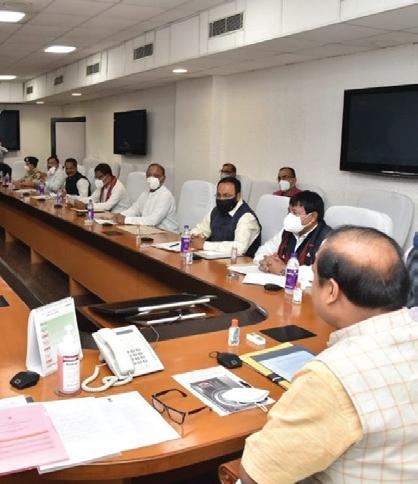
HYDERABAD: The Department of Municipal Administration and Urban Development, Government of Telangana has sanctioned `2,410 crore to Hyderabad Road Development Corporation Limited (HRDCL) to build 104 missing link roads identified within the limits of Greater Hyderabad Municipal Corporation and adjoining 10 ULBs.

First steel road constructed under ‘Waste to Wealth’ in Surat
SURAT: As part of a research project, a first-of-its-kind steel road from discarded steel waste has been made in the Hazira Industrial Area, Surat. The project is co-sponsored by the Council of Scientific and Industrial Research (CSIR) and the Central Road Research Institute (CRRI) with assistance from NITI Aayog and the Ministry of Steel.
CHANDIGARH: According to an official statement, the Haryana government on Friday approved the land pooling policy, a strategy to make the landbank available for significant urbanisation and industrialisation reasons. Landowners would participate as partners in the development process under the Haryana Land Pooling Policy-2022.
DISPUR: The state cabinet of Assam has given green signal to the ‘Tourism Policy 2022’, aimed at the development of infrastructure facilities at tourist destinations while preserving the cultural heritage and ecology of the state. The cabinet also approved the infrastructure development in 50 tea gardens situated along the existing tourism routes.
NEW DELHI: The Oil and Natural Gas Corporation Limited (ONGC) inked a Memorandum of Understanding (MoU) with GreenkoZeroC Private Limited (Greenko), on July 26, in New Delhi, to produce Green Hydrogen, Green Ammonia and other green hydrogen-based products. The MoU is in line with the National Hydrogen Mission.

NEW DELHI: PM of India launched the IFSC Banking Unit of Deutsche Bank AG in Gift City, on July 29. Customers

of banks in India and abroad will be able to access all approved international finance products through the IBU.
ADB approves $96.3 mn loan for water supply and sanitation in HP
SHIMLA: The Asian Development Bank (ADB) has approved a loan worth $96.3 million to provide safe drinking water and improve water supply and sanitation services in Himachal Pradesh. The funds will be used for implementation of projects under the Himachal Pradesh Rural Drinking Water Improvement and Livelihood Project.
BHUBANESWAR: The Electric Manufacturing Cluster (EMC) in Odisha received an investment commitment worth `914 crore from seven land allottees having the potential of generating over 4,600 jobs. Rajeev Chandrasekhar,
Minister of State for Electronics and Information Technology, GOI informed that the Odisha Industrial Infrastructure Development Corporation (IDCO) has been granted the approval in 2016, to set up a greenfield EMC.
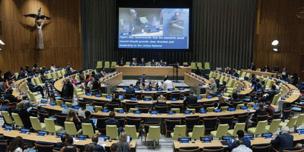
NEW DELHI: The United Nation’s Economic and Social Council (ECOSOC), organised a High-Level Political Forum (HLPF) 2022, from July 5 to July 11, under the theme ‘Building back better from the coronavirus disease (COVID-19) while advancing the full implementation of the 2030 Agenda for Sustainable Development’.
LUCKNOW: The Department of Urban Development, Govt of Uttar Pradesh, approved a budget of `1,647.5 crore for works under the AMRUT 2.0 scheme. In a meeting chaired by Amrit Abhijat, Principal Secretary, Urban Development Department, Govt of Uttar Pradesh, fund was approved to start work on 18 crucial projects in the state.
KAVARATTI: Dr Jitendra Singh Tomar, Minister of State (Independent Charge) Earth Sciences, in a written reply to a question in the Rajya Sabha, said that the National Institute of Ocean Technology (NIOT), has developed a Low-Temperature Thermal Desalination (LTTD) technology to turn sea water into potable water.
AHMEDABAD: In an official release, the Govt of Gujarat stated that they have decided on allocating `5,100 crore for development works in municipal corporations and municipalities. The money will be allocated under the Swarnim Jayanti Mukhaya

Madhya Pradesh mayoral polls: BJP manage to retain 9 seats
BENGALURU: The third edition of India Innovation Index, 2021, was released by National Institute for Transforming India (NITI) Aayog on July 21. Karnataka, Manipur and Chandigarh emerged as top performers in their respective categories. The index serves as an instrument to measure the performance of states and UTs in fostering the innovation ecosystem in their jurisdiction.

BHOPAL: The ruling Bhartiya Janta Party (BJP), in the recent Mayoral elections in Madhya Pradesh, has managed to secure nine seats out of a total of 16 seats. While Congress won five seats, Aam Aadmi Party (AAP) won one seat, and one went to an independent candidate.
NEW DELHI: The Municipal Corporation of Delhi (MCD) on Thursday, July 14, announced uniform rates for general trade and storage licences for establishments across the capital city. The new licence rates are higher in comparison to the ones that were levied by the former municipal corporations.
Odisha EMC gets investment worth `914 crore
Gujarat allocates `5,100 crore to urban civic bodies
MCD introduces uniform tax rates –to be increased by 15% every 3 years
`1.6k crore approved for AMRUT 2.0 in UPKarnataka tops NITI Aayog’s India Innovation Index 2021








NEW DELHI: The Ministry of Education released the Performance Grading Index for districts for 2019, on June 27, in which Sikar district emerged as the top performer, followed by JhunJhunu and Jaipur. In this index, districts are grouped into categories like ‘Utkarsh’ (81-90 per cent), ‘Ati-Uttam’.
Solar power solutions ensure uninterrupted functioning of healthcare institutions
KATOWICE: The 11th session of World Urban Forum held in Katowice, Poland from June 26 – 30. One of the sessions, held on the second day, discussed Equitable Urban Futures. The session was attended by various speakers including Dr Yama Moto, Assistant Secretary General, World Health Organisation; Renu Khosla, Director, Centre for Urban and Regional Excellence; Jan Olbrycht, Member of European Parliament; Elcio Batista, Planning Institute of Fortaleza City Hall; Mark Workman, World Blind Union; ChiomaAgwuegbo, Executive Director, TechHer; etc.
IMPHAL: Solar power-based equipments, installed in collaboration with Solar Electric Light Company (SELCO), are ensuring uninterrupted functioning of healthcare facilities in the state of Manipur. These solar energy-based equipments aim to provide a 24/7 uninterrupted supply of electricity to 68 health centres in three districts Chandel, Churachandpur and Tamenglong.
BHUBANESWAR: The Department of Micro, Small and Medium Enterprises (MSME) of Odisha, has been conferred

first prize in the category ‘National MSME Award 2022 to States/UTs for outstanding contribution for the promotion and development of MSME Sector’.
Kalahandi has been ranked third in ‘National MSME Award 2022’ in Aspirational districts’ category.
NEW DELHI: SkyTrax, an aviation rating firm, released World Airports Awards 2022, on June 23. Asia and Europe dominate the list, which was created using global customer satisfaction surveys taken from 2021 to 2022. SkyTrax included over 550 airports from across the world in its list.

DISPUR: In a move to boost renewable energy production in Assam, Chief Minister Himanta Biswa Sarma on May 31, inaugurated the largest ever solar power plant of Assam in Amguri, Sivasagar district. The power plant is spread across 340 acres of land and it has a capacity to produce 70 Mega Watt of power.

BHUBANESWAR: The Govt of Odisha is planning an initiative Surakshit Matritva Aashwasan (Suman), to reduce maternal mortality rate (MMR) and neonatal mortality rate (NMR). In Odisha, MMR stands at 136 deaths per one lakh live births and NMR stands at 27.
NEW DELHI: The World Bank announced that it has approved a $245 mn loan to boost India’s efforts to improve its rail freight and logistics infrastructure. The Rail Logistics project will assist India in diverting more traffic from roads and rail, improving the efficiency of transportation.
JAIPUR: Rajasthan joins the nation-wide ban on single use plastic from July 1, in line with the new Plastic Waste Management (Amendment) Rules 2021. Commonplace items like plastic sticks, cups, glasses, plates, etc. will now not be allowed to use. Those violating the rules will be penalised financially and will face suspension of license or imprisonment.

NEW DELHI: Manoj Joshi, Secretary, Ministry of Housing and Urban Affairs, launched the eighth edition of Swachh Suvekshan 2023, on May 27, under the Swachh Bharat Mission 2.0, a flagship scheme of Prime Minister Narendra Modi to make the country garbage free. This year, the survey is observing the theme of ‘Waste to Wealth’.
PANAJI: Vishwajit Rane, Minister of Urban Development, Government of Goa has said that the state government will formulate a master plan for every municipality in the state, after consultation with all stakeholders, councilors and other officials. Rane was chairing a meeting with the officials of the Department of Urban Development to review all the ongoing and pending projects.
AGARTALA: Tripura cabinet approved the Electronic Vehicle (EV) Policy, aiming to convert 10 per cent of the automobile into EVs in the next five years. There are at least 42,000 two-wheelers, 10,000 three-wheelers, 6,500 four-wheelers and 500 buses in the state and the state aims to convert 10 per cent of these into EV.
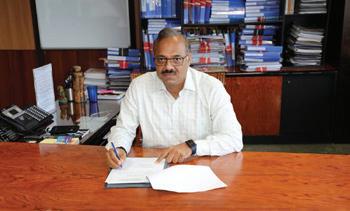
NEW DELHI: The President of India Ramnath Kovind appointed Vinai Kumar Saxena as LG of Delhi. Statement issued by the Rashtrapati Bhavan reads, “The President of India is pleased to appoint Vinai Kumar Saxena to be the new Lt Governor of NCT of Delhi with effect from the date he assumes charge of his office.”
PATNA: On Saturday, April 30, Chief Minister of Bihar Nitish Kumar inaugurated the state’s first Greenfield project of a grain-based ethanol plant in Purnea, at
NEW DELHI: The Government of India on May 20, appointed 1998 batch IAS officer Gyanesh Bharti
as the new commissioner and 1992 batch IAS officer Ashwani Kumar as the special officer in the newly unified New Delhi Municipal Corporation (NDMC). The information was released by the Ministry of Home Affairs.
HYDERABAD: The Govt of Andhra Pradesh signed an MoU with Adani Green Energy at the annual meet of the World Economic Forum. The meeting was held at Davos where an investment of `60,000 crore was decided for the state. This includes a 3,700 MW hydro storage project and a 10,000 MW solar energy project.
NEW DELHI: Surat, Udaipur, Bhopal, Indore, Ahmedabad, Bhubaneswar and Varanasi are the first set of cities to be awarded ‘smart cities’ status by the end of 2022. Bhopal is in the lead with a 92 per cent project completion rate, followed by Surat with 82 per cent, Udaipur at 78 per cent, Bhubaneswar at 76 per cent, Indore at 70 per cent, Varanasi at 70 per cent and Ahmedabad at 70 per cent.
a total cost of `105 crore. The ethanol production unit is a project under the ethanol production and promotion policy 2021 of the Government of Bihar.

SRINAGAR: Jammu Municipal Corporation (JMC) was accorded second rank in the Plastic Waste Management category at the Plastic Recycling Conference Asia 2.0 held in New Delhi. The corporation has introduced initiatives like the ‘Plastic Lao –Thaila/ Mask Pao’ and has developed infrastructure for the collection and transportation of dry and plastic waste.
NEW DELHI: NITI Aayog and UNICEF India on April 21 signed a Statement of Intent (SoI) on the Sustainable Development Goals (SDGs) that focuses on children. The collaboration seeks to construct a framework of cooperation to ultimately develop and launch the first report on the ‘State of India’s Children: Status and Trends in Multidimensional Child Development’.
BENGALURU: Under the 1 Lakh Housing scheme of the Chief Minister of Karnataka, Rajiv Gandhi Housing Corporation Limited (RGHCL) has received more than 40,000 applications. Chief Minister’s 1 Lakh Houses scheme was first introduced in the state budget of 201718. Construction has already begun on 42,984 houses and another 45,499 houses have also been sanctioned.

NITI Aayog and UNICEF India to develop India’s first report on State of India’s Children
Bihar gets India’s first Greenfield grain-based ethanol plant
NEW DELHI: The Supreme Court of India addressed the issue of growing illegal colonies in cities. A bench of Justices L Nageswara Rao and B R Gavai appointed Gopal Sankaranarayanan, Senior Advocate, as amicus curiae in the matter, to suggest ways for the states to tackle this problem. The bench expressed concern over the grave consequences of illegal colonies, even causing floods in Hyderabad and Kerala.

NEW DELHI: The Ministry of Panchayati Raj, Government of India and the United Nations Development Programme (UNDP) signed a joint statement of understanding on the localisation of Sustainable Development Goals. The agreement was signed by Sunil Kumar, Secretary, Ministry of Panchayati Raj, Government of India and Shoko Noda, Resident Representative, UNDP.
Tap-in Tap-out digital bus service launched in Mumbai
MUMBAI: Aditya Thackeray, Minister of Environment, Government of Maharashtra inaugurated the tap-in tap-out bus service on the Gateway
of India to Churchgate route. Brihanmumbai Electricity Supply and Transport (BEST) is India’s first completely digital bus service.
LUCKNOW: Chief Minister of Uttar Pradesh Yogi Adityanath has said
that all land records in the state including nazul land and urban ceiling will be digitized within the next two years. A master plan for each city will be developed by the Urban Development Department.

Svanidhi se Samridhi scheme expanded to 126 more cities
NEW DELHI: The Ministry of Housing and Urban Affairs (MoHUA), Government of India expanded the scheme ‘Svanidhi se Samridhi’ to include 126 more cities across 14 states and union territories. Svanidhi se Samridhi is an additional scheme of PM Street Vendor’s Atma Nirbhar Nidhi (PM SVANidhi) to provide micro-credit loans to street vendors, through lending institutions.
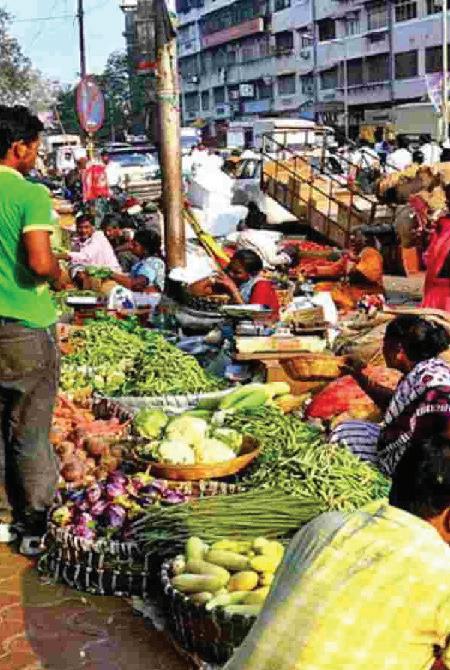
AGARTALA, Tripura: Agartala Smart City Ltd (ASCL) was awarded for its ‘sustainable business model’ under Integrated Command Control Centre (ICCC) category at the ‘Smart City Smart Urbanization’ conclave held in Surat, Gujarat. The event was jointly organised by the Ministry for Housing and Urban Affairs, Government of India and Surat Smart City Corporation Development Ltd.
INDORE: Indore Municipal Corporation launched a drive to increase ground water level of the city by conserving rainwater. The urban local body has set a target of at least one lakh structures for setting up rooftop rain water harvesting systems before this monsoon.


AGARTALA: NITI Aayog released the Round 1 of State Energy & Climate Index (SECI) on April 16. Tripura emerged on top in the electric vehicle (EV) penetration category. With a score of 58.7, Tripura emerged as the best performer in the ‘New Initiative’ category.
NEW DELHI: The United Nations Office for Disaster Risk Reduction (UNDRR) recently published the Global Assessment Report 2022, which established that the world is set to face 1.5 disasters a day – 560 a year – by 2030. This is happening because humans have put themselves on a spiral of self-destruction by heating up the climate and ignoring risk.

Digitization of land records within two years: UP
Tripura outshines all in NITI Aayog’s index
BHUBANESWAR: The ruling Biju Janata Dal (BJD) swept the municipal body polls held on March 26. The party won 76 out of the total 108 urban local bodies. All the Mayors and Chairpersons in 76 local bodies are also from the ruling party.

NEW DELHI: The third National Water awards were held in New Delhi on March 29, 2022 where Uttar Pradesh bagged the Best State Award. President of India Ram Nath Kovind presented the awards and launched ‘Jal Shakti Abhiyan: Catch the Rain Campaign 2022’. A total of 57 awards were presented across 11 categories.
SURAT: In a first, Surat in Gujarat has developed roads made out of steel waste. Built by Arcelor Mittal Nippon Steel India, the research project is an initiative of Council of Scientific and Industrial Research (CSIR) and the Central Road Research Institute (CRRI), supported by NITI Aayog and the Ministry of Steel, Govt of India.
PUNE: Prime Minister of India Narendra Modi inaugurated Pune Metro Rail Project on March 6. He promised that the metro will ease the mobility of people in Pune and give relief from pollution and jams, increasing the ease of living for everyone.
AGARTALA: In the Responsible Consumption and Production Index, Tripura has secured first place in the country corresponding to the Sustainable Development Goals (SDGs). It also topped in the no-poverty index as per the findings of the State of India’s Environment 2022 study by the Centre for Science and Environment.

MUMBAI: Chief Minister of Maharashtra Uddhav Thackeray released Mumbai’s Climate Action Plan (MCAP). It is India’s first climate action plan that sets short, medium and longterm climate goals aimed towards a net-zero target for 2050. MCAP is a policy document that adopts an evidence-based planning approach that mobilises resources to move from action planning to strategic projects.

NEW DELHI: India is among 13 nations holding Observer status in the Arctic Council- a high-level inter-governmental forum that addresses issues faced by the Arctic government and indigenous people of the region. Government of India released its Arctic policy titled ‘India and the Arctic: building a partnership for sustainable development’ on March 17.
NEW DELHI: The 7th Smart Cities India Expo was held at Pragati maidan, New Delhi from March 23-25, 2022. The three-day event saw a convergence of multiple stakeholders in urban development and governance. Key themes for this year’s expo were Smart Cities, Smart Transport, Smart Buildings, Smart Water, Smart Energy, Cleantech and Urban infrastructure.
63 Indian cities in 100 most polluted places: IQAir

NEW DELHI: As per the World Air Quality Report released by IQAir, a Swiss firm, Delhi is the most polluted capital in the world for the fourth time in a row. The report found that the pollution levels rose by 15 per cent from last year. The microscopic PM 2.5 pollutant level is 58.1 micrograms per cubic metre, which is more than 10 times the World Health Organisation (WHO)-recommended levels. No city in India met the WHO standard.

Tripura stands first in responsible consumption in SDG Index
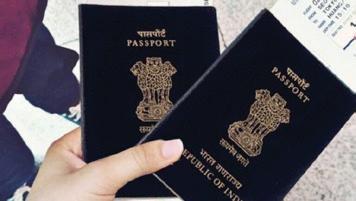

NEW DELHI: Indian Railways (IR) informed that all three zones of the Kolkata Metro, West Central Railway, and East Coast Railway have been fully electrified. IR is striving to become the world’s largest green railway system, with the goal of becoming a “net zero carbon emitter” by 2030.

Coca-Cola and PepsiCo ranked as world’s leading plastic
NEW DELHI: Nirmala Sitharaman, Minister of Finance, Government of India, while talking on the Union Budget 2022, announced that e-passports would be rolled out from next year to provide more convenience to the public. A chip integrated in the passport booklet will have the applicant’s signed personal information.
NEW DELHI: The South Delhi Municipal Corporation (SDMC) has initiated its first, digitally equipped school. Such schools are fully stocked with digital technology such as tablets, smart TVs, and electronic study material, officials said. It’s a primary school located in Najafgarh Zone’s Dwarka Sector-3.
NEW DELHI: “Through end of the century, the likelihood of wildfire events comparable to Australia’s Black Summer in 2019-2020 or the massive Arctic flames in 2020 occurring in a given year is anticipated to grow by 31-57 per cent,” stated a report commissioned by the United Nations Environment Programme. According to a recent study published in The Lancet, wildfire smoke causes more than 30,000 deaths per year on average in 43 countries.
BANGALURU: Air quality at six places of the Phase-II Bangalore Metro Rail Corporation (BMRCL) improved between 2017 and 2021, found a study conducted by Bangalore University’s Department of Environmental Science. This indicates that the metro project had a significant beneficial influence on improving the air quality in the area.
NEW DELHI: ‘Break Free from Plastic’, a global movement to demand massive reductions in single-use plastics, released a report ranking world’s leading plastic polluters. For the fourth year in a row, Coca-Cola and PepsiCo have been named the world’s biggest plastic polluters.
NEW DELHI: The World Bank released ‘World Development Report 2022’ in February, 2022. The report titled, ‘Finance for an Equitable Recovery’ said that the COVID-19 crisis has created growing risks of financial fragility and non-transparent debt for the developing nations. This is because currently home, company, bank, and government balance sheets are all intertwined.
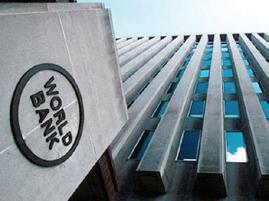

HYDERABAD: The Govt of Telangana notified two new urban development authorities (UDA) – Mahabubnagar Urban Development Authority and Neelagiri Urban Development Authority. The Mahabubnagar Urban Development Authority comprises Mahabubnagar, Bhootpur, Jadcharela and 142 peripheral villages. The Neelagiri Urban Development Authority includes Nalgonda municipality and 42 other villages.
NEW DELHI: The municipal corporations of Delhi have decided to regularise 16,346 safai karamcharis, and a ceremony would be organised to give them their appointment letters, announced Adesh Gupta, Delhi BJP President. The decision comes ahead of the civic body elections.
NEW DELHI: India and France signed an agreement to augment their bilateral exchanges on the blue economy thereby forming a common vision of ocean governance based on the rule of law and cooperate on sustainable and resilient coastal infrastructure. The agreement was signed during the visit of S Jaishankar, Minister of External Affairs, GOI to France with his French counterpart JeanYves Le Drian.
SDMC inaugurates first fullydigitally equipped school
Developing nations at risk of financial fragility: World BankBengaluru metro contributed to improving air quality: Study
HYDERABAD: KT Rama
Rao, Minister for Municipal Administration & Urban Development, Government of Telangana issued the Telangana State Municipal Act 2019 in Braille script, which will aid the visually impaired in obtaining information on municipal rules. The state government has been implementing numerous programmes for those with impairments. The book is currently accessible in English and Telugu.
NEW DELHI: The Cabinet Committee on Economic Affairs (CCEA) headed by Prime Minister Narendra Modi on January 6, accredited the `12,031 crore second phase of setting up transmission projects for supplying electricity from renewable energy projects. The second phase of the transmission corridors will provide 20 gigawatts of renewable energy to the national grid from Gujarat, Himachal Pradesh, Karnataka, Kerala, Rajasthan, Tamil Nadu and Uttar Pradesh.
CHANDIGARH: Sarabjit Kaur Dhillon of the Bharatiya Janata Party (BJP) became Chandigarh Mayor on January 8, defeating Anju Katyal of the Aam Aadmi Party (AAP) by one vote. Sarabjit Kaur received 14 votes, Katyal 13 and one vote was deemed invalid.
HOSUR: In order to accelerate the pace of development in Hosur city, the Government of Tamil Nadu has formed a separate urban development authority for the city. The development body will be akin to the Chennai Metropolitan Development Authority. Hosur is a 190.20-squarekilometer city on the banks of the Ponnaiyar River.

NEW DELHI: The Namami Gange programme will be replicated for other rivers in India, stated G Asok Kumar, Director General of National Mission for Clean Ganga (NMCG). The government is trying to include the Namami Gange working model into the National River Conservation Plan (NRCP), bringing it under the purview of NMCG, thereby building a framework for covering rest of the rivers of the country.
BHUBANESWAR: The Housing and Urban Development Department, Government of Odisha, issued a draft notification stating that the post of Mayor has been reserved for women in the Bhubaneswar (BMC) and the Berhampur civic body. Women have previously led the Berhampur Municipal Corporation and the Cuttack Municipal Corporation, but this is the first time the job has been reserved for them in the BMC.

ROURKELA: The Bloomberg philanthropies announced the result of the Mayors’ Challenge. The 15 winners of this challenge are to be awarded $1 million each to help cities implement their breakthrough ideas. India’s city Rourkela came in the list of 15 winner cities this year. The Bloomberg Philanthropies’ Mayors Challenge is a competition that encourages leaders to think outside the box on how to face their most difficult challenges in order to stimulate new, scalable ideas for improving cities and the lives of those who live in them. Rourkela from India has been awarded for its initiatives in economic recovery and inclusive growth.
NMC’s step to sustainability, will produce Bio-CNG from garbage
NAGPUR: Nagpur Municipal Corporation (NMC) will manufacture Bio-CNG and green hydrogen from garbage, which will save the city money in terms of both capital and operation and maintenance costs. The municipality will extract Bio-CNG from around 1,050 metric tonnes of waste.

Urban regions constitute 80% global GDP & 75% emission: WEF
NEW DELHI: Cities account for 80 per cent of global GDP, but 75 per cent of global GHG emissions, stated a new paper by World Economic Forum (WEF). The WEF’s ‘BiodiverCities by 2030’ initiative produced a paper with the Alexander von Humboldt Institute and the Colombian government, addressing the urgency of cities’ unsustainable connection with wildlife.
NEW DELHI: By March 2023, the Government of NCT of Delhi has mandated cab aggregators such as Ola and Uber, as well as delivery service providers, to ensure that 50 per cent of all twowheelers and 25 per cent of all four-wheelers in the fleet be Electric Vehicles (EVs).

NEW DELHI: The Intergovernmental Panel on Climate Change (IPCC), the United Nations body for climate science, published the second installment of the Sixth Assessment Report (AR6) on February 28. The report titled ‘Climate Change 2022: Impacts, Adaptation, and Vulnerability’ has subtly warned the world of how global leaders have failed in protecting over half of the world’s population, which is on the verge of losing their homes due to uninhabitable conditions. “Atlas of human suffering”, stated António Guterres, SecretaryGeneral, UN while commenting on the report. The IPCC report explicitly defines how climate change has the potential of essentially converting the earth into an inhabitable hotbox.
“Growing urbanisation and climate change together pose complicated dangers, particularly for places with poorly planned urban growth, high levels of poverty and unemployment, and a lack of essential amenities,” said Debra Roberts, Working Group CoChair, IPCC.

Several Indian cities and states, including Mumbai, Ahmedabad, Bihar, and Punjab, are susceptible hotspots, with a high probability of extreme events ranging from flooding to heat stress. Furthermore, this will result in more people being displaced due to climate change.
The report warned that India is one of the most vulnerable countries in terms of the population affected by the sea-level rise. If the emissions levels continue to soar, over 35 million people in India could face annual coastal flooding by the middle of the century. The numbers could rise to over 50 million people and damages amounting up to $24 billion.
Mumbai, India’s financial capital, in damage control from sea-level rise may
A wet-bulb temperature (lowest temperature at which air can be cooled by evaporation into the atmosphere) of 35 degrees is unsurvivable for more than six hours. According to the IPCC, wetbulb temperatures in India rarely exceed 31 degrees Celsius at the moment, with majority of the country seeing maximum wet-bulb temperatures of 25-30 degrees Celsius. Many portions of northern and coastal India would attain extremely dangerous wet-bulb temperatures of over 31 degrees Celsius by the end of the century if emissions are decreased just to the levels now promised.
What comes with a warmer globe?
Individuals’ physical health may also be jeopardised since illness transmission is expected to accelerate. The greatest threat comes from vector-borne and water-borne diseases like malaria, which are particularly prevalent in Asia’s sub-tropical regions, where warmer temperatures allow diseasecarrying insects like mosquitoes to spread quickly. In the coming decades, mortality from respiratory disorders, diabetes, infectious diseases, and other diseases is anticipated to rise.
According to the IPCC, glacial lake outburst floods will become more common in mountain regions, putting the lives of downstream inhabitants in peril. Recent events like the Chamoli disaster’s ice and rock avalanche, as well as cloudburst-like precipitation in Himachal Pradesh and Uttarakhand, have served as sharp reminders of this grim reality. In the future years, the IPCC predicts that glaciers in the Hindu Kush Himalaya region would melt at a faster rate. Meanwhile, as temperatures rise above 1.5°C, important river basins such as the Ganges and the Brahmaputra may experience more flooding.
Cities can play an important role in combating climate change. The important point is that reducing emissions, keeping a tight eye on deforestation operations, and planting more trees will all benefit the environment in the long run. “Cities also give chances for climate action,” Roberts states, “green buildings, reliable sources of clean water and renewable energy, and sustainable transportation networks that connect urban and rural areas may all lead to a more inclusive, fairer society.”
NEW DELHI: The President of India
Droupadi Murmu felicitates the cleanest states and cities during an award ceremony held under the title Azadi@75 Swachh Survekshan 2022, as part of the Swachh Bharat Mission Urban 2.0. The Ministry of Housing and Urban Affairs, Government of India, held the award distribution ceremony on October 1, at Talkatora Stadium, New Delhi.
The event also celebrated eight years of the Swachh Bharat Mission, which was launched in 2014, and the first anniversary of the Swachh Bharat Mission – Urban 2.0. During the celebration, the states/ union territories (UTs) and towns and cities that have achieved excellent results in the field of cleanliness and sanitation received the Swachh Survekshan 2022 Awards and certificates for Garbage Free Cities (GFC) cities.
Murmu launched the Swachh Survekshan 2022 Dashboard and presented around 12 awards. Indore, the city of lakes, again emerged as the ‘Cleanest City’ in the country for the sixth consecutive year in ‘more than 1 lakh population’ category. Surat emerged as the second ‘Cleanest City’ in the same category for a second time in a row, followed by Navi Mumbai in the third place.
In the ‘less than 1 lakh’ population category, Panchgani from Maharashtra came first, followed by Patan from Chhattisgarh in the second position and Karad, again from Maharashtra, was placed in the third position.
Tirupati from Andhra Pradesh was awarded the best city in the Safai Mitra Suraksha Challenge, and Haridwar in Uttarakhand was declared the best Ganga town award in ‘more than 1 lakh population’ category. On the other hand, Shivamogga in Karnataka received the fast mover city award.

Indore was also declared the first
7-star Garbage Free City in India. Similarly, Surat, Bhopal, Mysuru, Navi Mumbai, Vishakhapatnam and Tirupati received the 5-star Garbage Free certification.
In the state-level awards, Madhya Pradesh was declared the cleanest state in India in ‘more than 100 urban local bodies’ (ULB) category pushing the state of Chhattisgarh into second place.
For the last three years, Chhattisgarh had occupied the first place. The coastal state of Maharashtra emerged as the third cleanest state in India.
In the ‘less than 100 ULB’ category, Tripura emerged as the top performer pushing Jharkhand into second position which was winning the cleanest city award for the last two years. The Himalayan state of Uttarakhand secured the third cleanest state in this category.
This year, Swachh Survekshan recorded the participation of 4,355 cities and feedback from over nine crore people was collected, while last year it was only five crore. Out of 22 states
and five UTs which were awarded this year, eight states received more than ten awards each. On the other hand, eight states and five UTs have shown improvement spanning between 5 to 25 per cent compared to their overall performance last year. Similarly, four out of the eight northeastern states have shown considerable improvement.
Additionally, 10 Cantonment Boards (7 last year) and 2 Ganga Towns have been awarded this year. Smaller cities with a recorded population of less than 25,000 have admirable performance securing around 40 awards.
The Star Rating Protocol was launched in 2021, aiming to evaluate the performance of the cities based on solid waste management parameters. Around 3,600 cities have applied for the assessment this year, while only 2,238 cities applied last year. There were 11 five-star cities, 182 three-star cities and 218 one-star cities in this year’s assessment which highlights the aspiration of cities to attain the Garbage Free City status.
KATOWICE: World Cities Report 2022: Envisaging the Future of Cities, was published at the Eleventh Session of the World Urban Forum, being held in Katowice, Poland. It is a bi-annual report, which is an authoritative document on the state of the world’s cities.

The launch was attended by Maimunah Mohammad Sharif, Executive Director, UN-Habitat; Małgorzata Jarosinska-Jedynak, Secretary of State at the Ministry of Development Funds and Regional Policy, Poland; Marcin Krupa, Mayor, City of Katowice; and Ben Arimah, Head of Global Reports and Trends Unit, UNHabitat. The speakers discussed key findings of the report, it’s relevance for the cities of the post-pandemic world and recommendations.
Speaking at the event, Sharif discussed the need for a new social contract, since our approach towards development before the pandemic was an unsustainable one. “Businessas-usual leading to 2020 was an unsustainable model. We must take lessons from our responses to the COVID-19 and create a better, greener and more sustainable urban future. UNHabitat advocates for the optimistic scenario and believes that achieving equal and inclusive cities must involve a new social contract in the form of universal basic income, universal health coverage and universal housing and basic services,” she added.
The report intends to inform us about the state of cities of the world, anticipate the direction of growth they’ll take and allow us course-correct
our policies and efforts to build cities as habitable urban spaces. To this effect, Małgorzata Jarosińska-Jedynak discussed the need for cities to plan such as to meet the expectations of the urban dwellers. She said, “The Report speaks about coordinated, cohesive urban planning including the area of housing. This is extremely important and part of Poland’s National Urban Strategy for 2030.”
Marcin Krupa, Mayor of Katowice stresses on the importance of local governments in achieving the agenda of having sustainable and liveable cities in the future. Talking about the need to come up with multiple solutions to existing urban issues he says, “we need to stress that challenges are the same, but the problems might have a different scale. Our actions should also, therefore be diversified, there is no one-size-fitsall solution.” The report also discussed the idea of 15-minute cities to provide quality life to citizens, which means all basic needs of the people should be accessible to them within 15 minutes.
In the past two years, the future of cities has drastically changed, owing to a global pandemic.
The World Cities Report 2022, therefore, becomes all the more important to address issues which were hitherto not apparent. The findings of the report were summarized by Ben Arimah, Head of Global Reports and Trends Unit, UN-Habitat. One of the important points that this report addresses is that the cities need to be better prepared for disasters, apart from the pandemic. The governments need to build resilience across multiple dimensions. He also stressed on the fact that the future of the world is largely urban, but not necessarily large metropolitan cities. We need shift our focus to small and medium-sized cities and this is where the policies need to focus.
resource efficiency and management of water, solid and liquid waste.
SHARM EL-SHEIKH: Bhupendra Yadav, Minister for Environment Forest and Climate change, Government of India, submitted India’s Long-Term Low Emission Development Strategy (LT-LEDS) on November 14, during the 27th Conference of Parties (COP27) at Sharm el-Sheikh, Egypt.

Last year during COP26, the Prime Minister of India introduced the longterm goal of India, that is, becoming a net zero country by 2070. Apart from that, four other updated nationally determined contributions introduced that day include reaching 500 GW nonfossil energy capacity by 2030, meeting 50 per cent of energy requirement through renewables, cutting projected carbon emissions by one billion tonnes and reducing emission intensity by 45 per cent at 2005 level, all to be achieved by 2030.
Key elements of the LT-LEDS strategy include the low-carbon development of electrical systems in India, the development of integrated, efficient and inclusive low-carbon transport and industrial systems and the promotion of energy and material efficiency in buildings. Apart from that, the strategy also focuses on CO2 removal and related engineering solutions, increasing forest and vegetation cover while keeping in mind the economic and financial aspects of low-carbon
development for the country.
The first key element of the LT-LEDS strategy includes several sub-elements such as expanding renewables and strengthening the grid, exploration and promotion of low carbon technologies, demand side management, rational use of fossil fuel that does not compromise the energy security of the country, and lastly, determining green taxonomy and optimum energy mix. The second key element is greening the transport sector, especially road transport, including passenger and freight, which have a lion’s share with a massive 92 per cent in the transport sector’s total emissions. LT-LEDS strategy encourages improved fuel efficiencies, phased transition to clean fuels, and model shift towards less polluting modes of public transport. It also includes electrification across different modes and traffic management.
For the sustainable development of urban systems in India, this strategy aims to mainstream adaptation measures in the built environment, promoting resourcing efficiencies in system guidelines, policies and bylaws. The strategy also aims to introduce the elements of climate resilience in the building design and construction of all future urban systems. Along with it, the strategy stresses ensuring low-carbon municipal service delivery through
Reducing carbon emission from industrial system LT-LEDS aims to increase the use of natural and biobased materials, fuel switching and use of electricity in the manufacturing sector as far as possible, enhancing material efficiencies and recycling, thus strengthening the concept of circular economy. Green hydrogen technology and low carbon sustainable growth of micro, small and medium enterprises have been given due stress in the strategy.
For the development of CO2 removal technology, the strategy seeks international support in technology transfer, financial support and cooperation in research and innovation.
The country’s commitment towards conservation and promotion of biodiversity is also included in the LT-LEDS. It also includes restoration, conservation and management of plant, animal and microbial genetic resources and trees outside forests and simultaneously strengthening the institutional framework in the states concerning this sector.
However, the strategy makes it very clear that the country’s commitment towards transition towards a low-carbon economy should not compromise energy security, energy access and employment opportunities, thus following the principles of climate justice that India stands for. India recognises that climate change is a global problem and all countries should come together in times of crisis. But global climate action should be based on the principle of equity, and the concept of Common But Differential Responsibilities and Respective Capabilities (CBDR-RC) enshrined in the United Nations Framework Convention on Climate change (UNFCCC).
NEW DELHI: The World Economic Forum (WEF) and the National Institute of Urban Affairs (NIUA) signed a Memorandum of Understanding (MoU) on February 24, to together work on ‘Sustainable Cities India Programme’. The jointly designed programme aims to create an environment to enable cities to generate decarbonisation solutions in various sectors including energy, transport, and built environment. This programme has been initiated after Prime Minister Narendra Modi at COP 26 stated India’s commitment to turn net zero by 2070.
The ‘Sustainable Cities India
programme’ has been designed to enable cities to decarbonise in a systematic and sustainable manner, so that they can efficiently reduce emissions and deliver resilient and equitable urban ecosystems. Kunal Kumar, Joint Secretary, Ministry of Housing and Urban Affairs, Government of India, said that India is committed to become Net Zero by 2070, which aligns with the vision for a ‘future ready’ India set by PM Modi at COP26 Summit. He said that in order to realise this mission, it will be important to accelerate the clean energy transition conversation and more importantly, action amongst all
actors of the quadruple helix. He added that this partnership between NIUA and WEF is an important step towards that direction. This collaboration is expected to help cities in India and from across the globe learn from one another and drive action towards sustainable development and climate resilience.
The Forum and NIUA are set to adapt the Forum’s City Sprint Process and Toolbox of Solutions for decarbonisation in the context of five to seven Indian cities across two years. The City Sprint process is a series of multi-sectoral, multistakeholder workshops that involves enabling business, government, and civil society leaders to decarbonise through clean electrification and circularity. It results in shortlist of relevant policies and business models, which reduces emissions along with maximising system value, such as improved air quality and job creation. City Sprints are expected to jumpstart and accelerate net zero planning and action.
The process of City Sprint uses a digital platform named Toolbox of Solutions. It contains over 200 examples of clean electrification, efficiency, and smart infrastructure best practices and case studies from buildings, energy systems, and mobility from across 110 cities around the world. Hitesh Vaidya, Director, NIUA, said that the scale and pace of India’s rapid urbanisation is unprecedented. He said that is what makes imperative for institutions to prioritise and embed climate resilience in the urban development process. Therefore, he added that cross-sector and inter-organisational partnerships are crucial to foster an exchange of knowledge and identify best practices that can be applied effectively in the Indian context. He added that NIUA’s collaboration with WEF is of great value because it will build the capacities of urban practitioners in India through City Sprint workshops along with providing them access to a global Toolbox of Solutions and connect them with other potential partners in making Indian cities future ready.
NEW DELHI: Nirmala Sitharaman, Minister of Finance, Government of India announced the Union Budget 2022-23 on February 1. The budget included specifications of how India is on the path of building an inclusive master plan which would revamp the growth of nation’s urban development.
Amrit Kaal Sitharaman elaborated on the budget specifications:
♦ Promoting digital economy & fintech, technology-enabled development, energy transformation, and climate action.
♦ Relying on a virtuous cycle that starts with private investment and ends with public capital investment assisting to crowd-in private investment.
♦
The Budget 2022 included a blueprint of how the works in Amrit Kaal will proceed. This futuristic and inclusive plan will be guided by PM Gati Shakti and benefit youth, women, farmers and invite public investments for advanced infrastructure.
alternatives for transportation in hilly areas, the National Ropeways Development Programme will be implemented. The objective would be to enhance the convenience of commuters and promote tourism.
♦
Skilling programmes and industry partnerships will be reoriented to promote ongoing skilling, sustainability, and employability. The National Skill Qualification Framework (NSQF) will be updated to meet the changing needs of businesses. The DESHStack e-portal, a digital ecosystem for skilling and livelihood, will be established. Through online instruction, residents will be able to skill up, reskill, or upskill. It will also offer API-based trustworthy skill certifications, payment, and discovery layers to help people locate appropriate employment and start businesses.
benefits to women and children. Saksham Anganwadis are a new generation of anganwadis with upgraded infrastructure and audiovisual aids, as well as being powered by renewable energy and offering a better environment for early childhood development. Under the scheme, two lakh anganwadis will be refurbished.
The Har Ghar Nal Se Jal scheme will receive `60,000 crore in funding, with the goal of reaching 3.8 crore households by 2022-23.
In 2022-23, 80 lakh dwellings would be built for the PM Awas Yojana’s identified eligible participants, both rural and urban. A total of `48,000 crore has been set aside for this purpose.
♦
The Amrit Kaal will witness the next phase of Ease of Doing Business 2.0 and Ease of Living will be launched. In this phase, the manual processes and interventions will be digitalised and different governmental tiers will be integrated through IT bridges.
Enhanced connectivity and urban mobility
♦
To enable the speedy flow of mobility and commodities, the PM Gati Shakti Master Plan for Expressways will be developed in 2022-23. In 2022-23, the National Highways network will be extended by 25,000 kilometres.
To supplement public resources, a total of `20,000 crores will be raised through innovative financing methods.
♦ Striving for ecologically sustainable
♦ Startups will be encouraged to help ‘Drone Shakti’ through a variety of applications and Drone-as-a-Service (DrAAS).
To provide supplementary education in regional languages for classes 1-12, the ‘one class-one TV channel’ programme of PM eVIDYA will be expanded from 12 to 200 TV channels. Sitharaman also stated that the Government of India will set up 750 virtual labs in science and mathematics, 75 skilling e-labs to promote critical thinking skills in vocational courses.
♦ Mission Shakti, Mission Vatsalya, Saksham Anganwadi, and Poshan 2.0 are the initiatives that were introduced to give integrated
Sitharaman forecasted that over half of the population would be living in urban areas. She emphasised that an orderly urban development is critical to actualising India’s economic potential.
“There is a need to reimagine the cities that centre sustainable living with equal opportunities for the demographic dividend,” she stated.
♦ States will be given assistance in improving urban capability. Building bylaws will be updated, as well as Town Planning Schemes (TPS) and Transit-Oriented Development (TOD). This will make it easier for people to live and work near public transportation.
♦
Up to five existing academic institutions in different regions will be designated as centres of excellence to develop India’s specific knowledge in urban planning and design and to deliver certified training in these areas. Endowment funding of `250 crore would be allocated to each of these centres.
NEW DELHI: The World Health Organisation (WHO) and the International Labour Organisation (ILO) have called for measures to be put in place to protect workers’ health while teleworking (working from home). The two United Nations agencies released a new technical brief to healthy and safe teleworking, which outlines the health benefits and risks of teleworking. It also elaborates on the changes needed to accommodate the shift towards different forms of remote work arrangements brought on by the COVID-19 pandemic and the digital transformation of work.
The paper said that improved work–life balance, chances for flexible working hours and physical activity, reduced traffic and commuting time, and a reduction in air pollution are among the benefits. All of these can boost physical and mental health and social welfare of workers. For many
businesses, teleworking can result in increased productivity and cheaper operating costs.
However, the report warns that without proper planning and organisation, as well as health and safety support, teleworking can have a significant negative impact on workers’ physical and mental health, as well as their social well-being. Isolation, burnout, depression, domestic violence, musculoskeletal and other injuries, eye strain, increased smoking and alcohol consumption, prolonged sitting and screen time, and unhealthy weight gain are all possible consequences.
The paper explains the roles that governments, businesses, employees, and workplace health services should play in promoting and preserving teleworker health and safety.
Dr Maria Neira, Director, Department of Environment, Climate Change and Health, World Health Organisation,
said that in the nearly two years since the pandemic began, it has become evident that teleworking can have both positive and negative health consequences. The outcome is totally dependent on whether governments, companies, and workers collaborate, as well as whether there are agile and innovative occupational health services in place to implement policies and practices that benefit both workers and the workplace.
The paper states that employers need to ensure that employees have adequate equipment to complete job tasks; provide relevant information, guidelines, and training to reduce the psychosocial and mental health effects of teleworking; train managers in effective risk management, distance leadership, and workplace health promotion; and establish the “right to disconnect” and adequate rest days.
According to the report, employing digital telehealth technologies, occupational health services should be able to provide teleworkers with ergonomic, mental health, and psychosocial aid.
The paper presents effective telework organisation options that meet both workers’ and employers’ needs. Discussing and developing individual teleworking work plans and clarifying priorities; being clear about timelines and expected results; agreeing on a common system for signalling availability for work; and ensuring that managers and colleagues respect the system are just a few of the items on the list.
Businesses with teleworkers should create teleworking-specific programmes that combine measures for work and performance management with information and communication technologies and appropriate equipment, as well as occupational health services for general health, ergonomics, and psychosocial support.

BHUBANESHWAR: Odisha has emerged as the top performing state, followed by Uttar Pradesh, in the first edition of ‘State Ranking Index for NFSA 2022- creating resilient food systems to optimize the delivery of benefits’, which was released by Piyush Goyal, Minister of Consumer Affairs Food and Public Distribution, Government of India, on July 5, 2022.
The State Ranking Index was released by Piyush Goyal on Tuesday, at the conference of Food Ministers on Food & Nutrition Security in India, held in New Delhi.

In the Index, the performance of states and union territories are ranked based on three key pillars, aimed at ensuring end-to-end implementation of the National Food Security Act (NFSA), through Targeted Public Distribution System (TPDS). The three key pillars are (i) NFSA – coverage, targeting and provisions of the act, (ii) delivery platforms, and (iii) nutrition initiatives.
Since the implementation of the National Food Security Act in the state in 2015, Odisha has made significant efforts to ensure end-to-end computerisation of TPDS operations.
The state has created a digitalised database of 3.25 crore beneficiaries, which can be updated through 378 Ration Card Management System (RCMS) Centers, and there is at least one RCMS in 314 Blocks and 64 Urban Local Bodies (ULBs) of the state.
Apart from that, all the 152 storage depots of the Food Supplies & Consumer Welfare Department have achieved 100 per cent automation, which helps in real-time electronic recording of doorstep delivery of 1.87 lakh MT food grains at 12,133 Fair Price Shops in the state every month. All the Fair Price shops are provided with electronic Point of Sale (e-PoS) devices, which ensure distribution to PDS through automation.
Also, the One Nation One Ration Card (ONORC) programme has been implemented in the state since July 2021, intra-state and inter-state portability option is also available to PDS beneficiaries, who also have the option to choose any fair price shops as per their convenience to receive their monthly entitlements. Approximately 1.10 lakh families receive ration through the intra-state facility and nearly 533 families are provided ration
through the inter-state facility every month. Total 10,578 fair price shops out of 12,206 have been made ONORC enabled. This number will go up as soon as the network connectivity in the area of other fair price shops improves.
‘Supply of Fortified Rice under Public Distribution in Malkangiri district’- a pilot scheme is also being implemented since July 2021. Nearly 1.29 Lakh families, including 4.66 lakh members, are supplied 3138 MT fortified rice under NFSA & State Food Security Scheme. Additionally, the state administration has started providing fortified rice to the School & Mass Education Department for the PM-POSHAN programme and the Department of Women and Child Development for the SNP programme.
All the initiatives fetched a score of 0.836 for Odisha, making it the top performer in general category states, followed by Uttar Pradesh with a score of 0.797 and Andhra Pradesh with a score of 0.794.
In the special state category, Tripura was ranked first with a total score of 0.788 followed by Himachal Pradesh with a score of 0.758 and Sikkim was in third place with a score of 0.710.

All years have their significance. A few are remembered for good reasons and some for not so good. You and I have experienced both kinds in the recent past. 2022 has been kinder than the past two years. I am referring to the large-scale health crisis that affected humankind, especially in our cities. This year, people sighed in relief and moved forward without CovId-19 disrupting their lives
022 was significant for India other than the normalization of daily lives in the post-Covid era. The nation completed 75 years of its independence. Countries
around the world face severe challenges in the economy and the impacts of climate change. India did well on the economy front and escaped the slowing of growth experienced by many countries, including China. India is well positioned against global financial headwinds or looming global recession in many parts of the world. There is an area where everyone is in the same position; that is the increasingly adverse impacts of climate change, which are being felt in India and elsewhere alike.
India took over the presidency of G20 on December 1 this year. The next year is going to be crucial. India can leverage the G20 Presidency to bring the member states to work on a common agenda of global good. And, the theme chosen says so—One Earth, One Family, One Future.
And the collective future of all depends on cities. The economy, development, and public services are centred around cities. The effect of climate change will be felt in cities the most. Recently, Pakistan suffered substantial economic losses of USD 32-40 Billion because of the furious floods. Our cities need to be ready to avoid such situations. We did not face such a huge setback this year, barring some impacts here and there. It does not mean that India can relax and do nothing to fix its urban systems and environmental degradation. The nation is continuously working to find its urban fault lines and fix them. Many of our urban missions are trying to address problems in cities and towns.
Not very long ago, it was said that only ten paise out of one rupee reached the real beneficiary. That was referred to corrupt practices in politics and bureaucracy causing leakages. But if we apply the same analogy to policy making at the central level and policy implementation at the local level, there are gaping holes. Only 10 per cent of policies’ benefits reach the local level. It is not just in India but in many countries. Policymaking could be excellent, but many schemes falter during implementation.
The nation has come out with some excellent policies and missions in the past few years, but only some of these schemes trickle down to the municipal level in the same spirit. In my interaction with local government officials, including some Indian Administrative Services (IAS) officers, they are unclear about the objectives of some urban missions. For example, Smart Cities Mission aimed to make cities efficient in urban management, improve the quality of life in cities with pan-city and area-based development, and make the city’s coffers rich. Many officers are treating the Mission as a plain grant-based scheme without giving much attention to making those projects financially viable or generating money for the projects over and above the sanctioned budget provided by the centre and state government. It means
that the nation still needs capacity building at all levels.
The country has done excellent work on sanitation in the past several years, and this year was no different. Our cities are continuously improving their sanitation standards and waste management techniques. The water management work is also picking up pace with Jal Jeevan Mission. These initiatives are timely and much required to address the present demands of urban residents. Everything the government is doing under various missions of the central government is ostensibly improving essential civic services for all. But dig deeper, and one can find that these schemes are greasing the urban engine to rev powerfully. It will, in turn, support the nation’s growth. Another important task at hand is upskilling municipal officials. A step forward could be creating a specialized force of urban officials for running cities. Cities have no alternative but to create a workforce that can address urban issues with their technical acumen. Private players are also coming up and participating. Recently, the Adani group won the bid to redevelop Dharavi-India’s largest slum. It will be challenging to pull off, but if it happens, it could be a model for other cities.
The last month of the year was happening for the national capital as MCD elections were held after merging three corporations. It will be interesting to see when the new council starts functioning and elects the mayor representing Delhi. As the years go by, local governments in the country are maturing. With new challenges, their role is also going to change. State and central governments have to delegate more authority to local governments and also prepare them to handle urban issues at the local level. The knowledge shared on a global platform like the COPs should be shared with cities and towns. The national government must understand that the global agenda will be achieved only when cities are on board. The efforts are on, and the march continues.
Technology is helping in enhancing our life experiences in cities and elsewhere. The growing use of ultramodern technology almost everywhere in our urban centres calls for enhanced capacity of municipal officials handling urban operations in cities
Innovation and creativity drive the lives of human beings. They always strive to make their lives easier. Humans have used their creativity in stinct to improve their quality of life and make it restful and comfortable for them using their analytical minds and intelligence. From rural settlements to high-rise metros, urban settlements have witnessed massive transformations through the ages. In today’s world, technology is the key driver of change. Another important aspect impacting humans’ lives these days is data collection and its use. It plays an ever-more significant role in quantifying and qualifying citizen service delivery, and as such, it is at the helm of most innovation projects within cities.
In the post-pandemic world, internet access has become essential for many services, including employment, education and health services. The pandemic underlined the importance of connectivity. Now it goes beyond just enabling internet access for people. It is also helping us improve urban systems at the policy and planning level.
City governments are responsible for managing a vast array of functions like waste management, water supply,
mobility, education, housing and health to support industries, households and individuals. Most of these works are done individually by respective departments within the municipalities, but one thread connects them all. That is data. Municipal corporations, especially after the smart cities mission in 100 plus cities of India, are collecting data from users and other operations of the Urban Local Bodies that are being used to improve the efficiency of urban operations. However, data-driven governance still needs to be made common in our cities. There is a vast amount of data collection daily at the local level. However, most urban centres still need to gain an understanding of using the collected data for improving governance and delivery systems.
Data exchange between different departments within a municipality or among municipalities and other parastatal bodies is also a complex process. Cities must develop a system that can be used for real-time data sharing between departments. It can make data-use effective for service delivery improvements. Understanding that collected data could be another asset for cities, the Government of India, has developed India Urban Data Exchange (IUDX) is an open sources platform that facilitates secure, authenticated
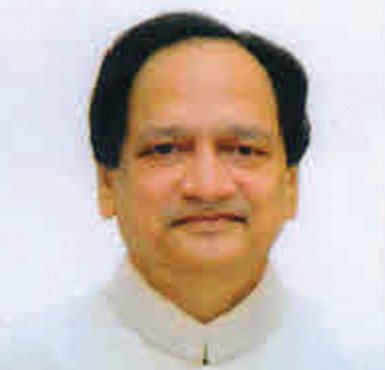
and managed exchange of data amongst various data platforms, thirdparty authenticated and authorised applications and other data sources, data producers and consumers, both within a city to begin with and scaled up across cities eventually at a national level, in a uniform & seamless way.
Creating data exchange solutions will ensure streamlined access and drive better data-driven decisions across the country. For making use of data, cities must prioritise the expected outcomes from data analysis and data use. Cities must assess their capacity to handle data and ensure it remains secure. Upskilling at the municipal level could be a challenging task if the local governments are going to use data regularly to assess their service delivery and governance. Data security is vital to ensure that citizens’ collected data is not misused and remain secure with the local bodies. It will be essential to build confidence in the minds of citizens that their data is in safe hands. since it will be a beginning of a sort, ensuring data security will be critical for the success of the projects in urban centres across the country. The government of India has come out with a report, Datasmart
Cities: Empowering cities through data can referred to understand the requirements at the local level and the benefit they can draw from such an initiative. The report has highlighted some of the best usages of the data in different parts of the world and how it is changing the lives of citizens.

Many cities are devising unique methods and systems to engage citizens in local planning and budgeting using technology and data. Quito, the capital city of Ecuador, developed a platform called Mi Ciudad. It shares data about the city – including services, infrastructure and budget allocation. The platform enables more citizen participation. A percentage of the municipal budget is assigned to the projects proposed by citizens at neighbourhood assemblies. A similar programme is running in Boston, the United states of America, where youth give suggestions on the projects the city should take up. over 2000 youngsters aged between 12-25 decide, through voting on project ideas, how to spend one million dollars of the city’s budget. Another initiative of The Boston city
For data use, cities must prioritise the expected outcomes from data analysis and data use. Cities must assess their capacity to handle data and ensure it remains secure. Upskilling at the municipal level could be a challenging task if the local governments are going to use data regularly for assessing their service delivery and governance
government is Cityscore.
According to a report, it is an online dashboard showing how the city government performs against its targets in 24 areas – from sign placement to emergency call response, garbage collection, and pothole repairs. Daily activity updates make performance and progress transparent to the public and city administrators. A single, combined number summarises how the administration is performing overall. Dublin and Melbourne are among the cities leading the way in making their data publicly available for businesses and citizens to use and providing tools for visualisation and analysis. Melbourne decided to make available data it has collected for many years on areas such as land use and pedestrian movements; Dublin’s website Dublinked is a partnership of local authorities and the National University of Ireland.
Cities in India are at an advantage as the world’s largest IT Industry is in their backyards. They can take their assistance in upskilling their existing staff, collaborate for new application development, or sign a long-term pact for long-term arrangement. For that, every city must first assess its needs and the kind of data itss want to own. The next phase would be using the data to improve citizens’ lives and the municipality’s operations.
Policymakers, academicians, thinkers, and other leaders around the world are grappling with the issue of economic inequality and rising disparity among the rich and the poor. While these leaders call for action to remove disparities and create a more equal world, the opposite seems to be happening. The rich and super rich are pulling away from the rest and gaining greater momentum. Are we looking at some utopian goal or is there some other way?
n the 2030 Agenda for Sustainable Development, governments have recognised that “rising inequalities within and among countries”, “enormous disparities of opportunity, wealth and power” and “persistent gender inequality” are among the “immense challenges” confronting the world today.
Estimates by a global research institute suggest that in 2017, the bottom half of the global population owned less than 1 per cent of total wealth. On the other hand, the richest 10 per cent owned 88 per cent of the world’s wealth. Even more starkly, the richest 1 per cent alone held about 50 per cent of all wealth. Looked at in another way, the richest 1 per cent of the world controlled as much wealth as the remaining 99 per cent of the population.
There are several studies and reports on the subject, most suggesting that the situation over the years has become more unequal. WEF looks at the period between 1995 and 2021. Of all the growth that took place in global wealth (additional wealth generated) during this period, the poorest half of the population could capture only 2.3 per cent; by contrasts, the top 1 per cent captured 38 per cent of this
additional wealth. As we strive for a more equal world, several events, often unpredictable or uncontrollable, make the task more daunting. Conflicts, public health emergencies and events related to Climate Change and natural disasters push large populations into poverty and distress and result in deepening of inequalities and disparities. Also, some argue that this growing disparity, in many countries is not by mere chance. It is the outcome of policy choices – fiscal and regulatory policies including on taxation - that led to such accumulation of individual wealth and concentration of economic power among a few. However there are other factors too.
Technology has played some role in this whole process. Take the example the music industry. Earlier in the era of audio cassettes and CDs, there were many companies (possibly employing large number of people) who created these cassettes and CDs. In addition there were thousands of vendors in each city selling the cassettes and CDs. With technology disruption, all these are out of business. now we have a few companies that provide apps that can
be downloaded on our smartphones and we can listen to millions of musical creations that too in excellent digital quality at a fraction of the cost. So income of many cassette/CD producers and sellers has got concentrated in the hands of a few music app developers.
Then, there is the imaging/ photography industry. gone are all the cameras, the film rolls, the photographic paper, the processing labs; and all their incomes. These are replaced by the handful of companies manufacturing smartphones. A smartphone is all you need to click, store, edit, and share photographs, all at no cost. Once again concentration of income and wealth in the hands of a few while destroying incomes of a large number of people. We could see the same happen in the case of edtech. It is likely that the apps and online education tools developed by a few edtech companies will put out of business large numbers of private coaching classes employing large numbers of teaching professionals. Once again we could see concentration of income, wealth, and economic power in the hands of a few.As we look around, we will find many such transformative changes taking place. And none of these changes are reducing inequality; they are all doing the opposite.
Wealth concentration gives rise to income concentration which in turn enhances wealth and thus the spiral which accelerates the concentration of economic power. Wealth gives rise to income (interest, rent, dividends, capital gains), which again shores up wealth leading to enhanced incomes; thereby setting in motion a cycle leading to greater economic concentration.
The way the current systems and practices are structured has much scope for increasing inequity, not reducing inequity. Consider the following example in sports as an illustration. We all know that the talent and capabilities of the two finalists in say the Wimbledon or the uS Open tournaments are almost the same. One
of them will win the championship and one will lose. The loser may lose just because of a minor error of judgement in one shot while he played as brilliantly as the other throughout the match. So both are equally deserving candidates for the championship. But only one will win. And see the difference between the winnings of the two. The Wimbledon men’s singles winner reportedly takes home 2 million pounds while the runner-up gets just half at 1.05 million. In the uS Open, the winner walks away with 2.6 million uS dollars while the runner up gets just 1.3 million. Or take the 100 metre sprint in the Olympics Final. The difference between the winner and the one coming second could be one hundredth of a second or less. But see the enormous fame, glory, and fortune (including brand endorsement contracts) that await the winner while one hardly talks about the athlete who came in second. We may say ‘the winner takes it all’. So the structure of rewards and compensations is built in such a way, intentionally or otherwise, as to spread more inequality.
Take the compensation in the corporate world. The CEO’s paycheck is sometimes breathtakingly removed from that of the other senior management personnel. Or even the highest pay package offered to a B-school graduate compared to the median pay package of the same institute.
given this environment, it seems that the ones hoping to see a more equal world could face disappointment. The world is just not designed that way, and the situation could get more unequal. As for the situation in our urban spaces, we could look at the wide (and widening) disparities between the rich and the poor and feel disheartened. But that may not be the right way to look at things. On the other hand we could possibly see whether the city dwellers including the poor are better off than they would be in their villages. Are they getting a better deal in the city? Are
As we strive for a more equal world, several events, often unpredictable or uncontrollable, make the task more daunting. Conflicts, public health emergencies and events related to Climate Change and natural disasters push large populations into poverty and distress and result in deepening of inequalities and disparities
they able to experience better service delivery like treated drinking water in taps, public toilets (sanitation), health services in public hospitals (one hears of villagers having to walk over 10 kilometres to the nearest public health facility), schools, efficient (and very affordable) public transport, and a host of livelihood opportunities? The answer is pretty obvious.
City planners must therefore think less about removing disparities and more about creating efficient, effective, affordable services which will benefit all, mostly the less affluent. The suburban railway system in Mumbai is a shining example of how a good public service can improve the lives of millions. It is an efficient, very reliable, and highly affordable way for the poor to access attractive livelihood opportunities even 30-50 kilometres away, traveling each way every day, enabling them to earn decent incomes. people swear by it inspite of the overcrowding and physical discomfort. It also enables governments to create stock of affordable (including rental) housing in faraway places where land prices are more moderate. So, in a way, this rail system is the one facility that puts the poor on an even keel in many ways; something they could hardly imagine in their villages.
Cities must work to ensure that inequalities in incomes and wealth do not result in inequalities in access to opportunities.
Incube (Bilaspur Incubation Centre), founded by the All Indian Institute of Local Self-Government (AIILSG), has become a shining example of private and public sector collaboration to promote innovation. It has collaborated with Amazon Web Services (AWS), Zoho, and many other partners, to create a first-class start-up accelerator in India. AIILSG By combining the efforts of industries, the government, academia, research organizations, and corporate groups, the Government of India seeks to introduce international cloud services, empower venture capital funds, and link industry counselling resources to create a comprehensive ecosystem to facilitate new start-ups.
Since its inception in 2021, the centre has successfully incubated a total of 105 start-ups, out of which more than 47 per cent have already graduated.
Vision of the centre is to nurture cloud talent, accelerate the growth of India’s new start-ups, help teams break into the global stage, and support the upgradion and transformation of local industries to export more successful Indian models.
Virtual Acceleration Programme, a 14week acceleration programme, held on December 14-15 and implemented by B.Incube in collaboration with Wadhwani Foundation, wherein 40 startups went through a structured process to refine their problem statement, customers and market segments, business plans and creating financial strategies. the Virtual Acceleration Program, following community epidemic prevention measures, was the first in this year’s events to be held virtually. the event was also broadcast online, where participating teams showcased India’s strength in innovation to the world. During the event, a ‘Best new Innovation Award’ was awarded to start-up ‘Cargar’ Founder raj Anupam from the Clean tech sector, by a panel
of judges. Apart from that, an ‘Audience Choice Award’ was also given to start-up ‘Agri Career’ founder Yuvraj manishwinner from the edtech sector.
As part of our ongoing 360 degrees support to help early-stage entrepreneurs to continue their entrepreneurial journey, B.Incube organized a Startup Demo Day, wherein 15 start-ups were given the opportunity to make their pitches before a panel of investors. Besides product pitches from start-up teams, special panel discussions and keynote speeches also took place during this event.
Group Captain Y Srinivas (retd), retired IAF officer, delivered the keynote address said, “the CoVID-19 pandemic has not only accelerated the digital transformation of various industries but has notably attracted global attention to Indian industries’ potential.” Srinivas said that Smart City Bilaspur is fully committed to facilitate start-up incubation and digital transformation, besides playing a part in the establishment of the Incubation Centre, Bilaspur City. B.Incube is also the first accelerator program to be established by a local government in Chhattisgarh.
the Smart City Bilaspur will continue to help match start-ups with willing corporate partners, with the help of which new start-ups can obtain resources from enterprises, and on the other hand, enterprises can benefit from accelerated digital transformation. through a comprehensive entrepreneurial acceleration program that encompasses team mentor training, community relations management, local industry resources development in Bilaspur, and capital matching, the centre also wants to accelerate the marketisation, scaling, and internationalization of creative ideas to help them create a market value. out of a total of 105 start-up teams who have completed the program, 60 have attained recognition and acquired a venture capital investment.

SHArm eL-SHeIKH, egypt - the Baltic state of estonia relies on shale oil, a locally mined fossil fuel, to generate power - and despite a short-term boost in production to fill a gap in electricity imports after russia invaded ukraine, it is sticking to targets to ditch the polluting fuel. the government has committed to phase out shale-oil power plants by 2035 and end production by 2040. As part of the plan, it is also helping communities whose incomes are tied to the fuel to map out a new green future for their young people.
At the CoP27 climate summit in egypt this month, Kädi ristkok, director of the climate department at estonia’s ministry of environment, explained that the move away from shale oil in the northeastern county of Ida-Viru - where it accounts for almost half of GDP - will affect about 1,50,000 people. Since 2020, efforts to create a “territorial Just transition Plan”, approved earlier this year, have consulted with local people - from youth to labour unions and government officials - on how they view their development needs as the shale oil industry is phased out.
the vision that emerged was of economic restructuring based on renewable energy and modern, greener manufacturing, as well as services, with
young people - as in many other places - hoping to find jobs in the creative and It sectors. that has highlighted the need to provide re-skilling, new forms of professional education and incubation for startups, besides environmental restoration work to rectify the damage to nature from shale oil mining over the past century. All of this costs money - which estonia, as a european union member state, has been able to win from an eu mechanism set up to fund a “just transition” under the bloc’s Green Deal, designed to help it meet its climate goals.
In october, the eu announced that estonia would receive 354 million euros ($368 million) in grants from its “just transition” fund to support the phaseout of shale oil by developing renewable energy and “high value-added” green jobs.
oPPortunItIeS SCArCe to reach its goal of sourcing 70 per cent of its energy from renewables by 2030 and becoming carbon-neutral by mid-century, Papua new-Guinea (PnG) will need to start training its people for new jobs in clean energy, such as solar, said rensie Panda, Acting Policy manager in the Papua new Guinea (PnG) national energy Authority.
But in many parts of the world, including Africa, those skills are still hard to come by, said Ben odongo, an energy youth fellow with the u n climate champions team. In uganda, young people have found it far easier to get training to work in the oil and gas industry - with the government planning to exploit and export its reserves via the east African Crude oil Pipeline in coming years - than in renewables, he said.
“If you want to learn about (clean energy), it takes a lot of personal dedication,” he said. the government and businesses are not making enough effort to create green opportunities for young people, who are increasingly aware of how fossil fuels are driving climate change, he added.
Source: The article was first published in Context Media Platform of the Reuters Foundation
The webinar titled ‘’Mind the Gap Leave no One and Place Behind’’ was organised by the Institute for Spatial Planning and Environment Research, India (ISPER) on the occasion of World Habitat Day which falls on October 3, 2022. The title of the webinar was the same as this year’s theme of ‘World Habitat Day’ which is “Mind the Gap. Leave No One and Place Behind.”
run Kumar, Professor of Economics (Retd.), Jawaharlal Nehru University while highlighting the issue of inequality between the haves and have-nots, noted that the problem of unemployment has aggravated due to the rise in the use of technology. Lack of social sector development including health and education exacerbates inequalities. He also skimmed through the issues of rising extreme weather events, and globalisation that has created resentment in the advanced countries. Therefore, countries are tilting towards the right, leading to a less tolerant conservative societies. He later shed light on some of the solutions including social safety nets introduced in 1980s, while in India they were implemented in the 2000s which include the Right to Education, Right to Food and MGNREGA (Mahatma Gandhi National Rural Employment Guarantee Scheme). The need of the hour is to devise sustainable long-term solutions, instead of these short-term measures.
Discussing another kind of inequality, Ashwani Luthra, Professor, Guru Nanak Dev University (GNDU), Amritsar spoke about urban bias in policymaking. Referring to the title he said that the gap has been identified in the form of 3Cs, that is Covid-19, Climate and Conflict. At the policy level, there is a lack of integration with other policies and financial glitches, while spatial planning is urban-biased and
development is pro-rich. Following this comment, he outlined some of the urban challenges like inadequacies in existing urban infrastructure like water and sewerage, etc. Regionalisation of urban development is the key to solving these issues. The land-use-based spatial planning approach needs to be changed to climate-resilient smart planning. Making slum-free cities should be the agenda of the government.
Professor Tanuja Sharma, Management Development Institute, Gurgaon spoke on the subject of Environmental, Social, and Governance (ESG) system, its components and its progress in India. According to her, the corporate sector prioritises profit over environment. Lack of general corporate integrity has always been a point of concern, and even this globalisation is driven by government-business nexuses. But when governments, businesses and the media band together, then the public becomes vulnerable. The ESG initiative which is commended by United Nations (UN) and advocated by Europe, is mandated by the Securities Exchange Board of India (SEBI) in India as the Business Responsibility and Sustainability Report (BRSR) initiative.
Dr Rahul Deshpande, Dean, NICMAR University, Pune discussed about the transport sector and its impact on climate change. The transport sector, he said, is solely responsible for 14 per cent of the total global Green House Gas
(GHG) emissions and to address this issue we are stressing public transport but the affordability of the transport like metro is still not there.
Rakesh Ranjan, Senior Consultant, NITI Aayog highlighted an important issue in policy implementation. Taking the example of the aspirational district programme, he said that when the performance under a programme or scheme is assessed based on indicators, then the tendency to do the bare minimum grows. For instance, in maternal health we take into account whether the midwives are visiting the pregnant women four times or not. However, the responsibility also lies with the civil society to make such programmes successful.
P Singh, Chief Town Planner DTCP, Haryana, suggested that the inequality is reducing but it is not the rosy picture. As far as development
planning is concerned around 80 per cent of Haryana is covered. The major gap in the grievances redressal of the allottees has been plugged, which arose as there was a huge participation from the private sector in Haryana. The complaints of the allottees have been well addressed by the Real Estate Regulatory Authority. He also talks about the large scope of digitalisation and decentralisation of power. Mansi Sachadeva, Urban Planner, UN-Habitat, India briefly explained SDG India Index and the progress of the country on SDG 11 for which the regional focus on the Northeast and Jammu and Kashmir is required. She also elucidated the issue of urban poverty and its multidimensional nature which needs to be understood to make us more inclusive of the needs of vulnerable sections.
Jaswant Singh, Secretary General, KSS-ISPER, Panchkula, spoke at length
on the subject of housing for all. In countries like South Africa, Kenya, and Canada, housing is included in the list of fundamental rights, while in India it comes under Article 21 (Right to Shelter, Growth and Nourishment) of the Indian Constitution. He noted that the Right to Shelter not only means a roof over one’s head but also having essential infrastructure to enable one to live a life of dignity. Therefore, the Supreme Court of India has put the onus on the government to include it in the list of fundamental rights. He also highlighted that there is a huge gap between the demand for affordable houses and their availability especially when 16–17 per cent of our population resides in slums.
Abhishek Pandey, Editor, Urban Update, All India Institute of Local Self-Governance (AIILSG), spoke about the urban local bodies (ULBs) in terms of service delivery and access to infrastructure facilities in our cities. Housing 18 per cent of world’s population, India has only 3 per cent of the global household wealth. In cities, there is a huge difference in the benefits and services enjoyed by the rich living in posh localities and people living in slums who are deprived of basic necessities. He also talked about the Equi-City project started by the AIILSG in Nagpur which aims to ensure that all the localities have access to facilities and services.
Income disparity is only one kind of inequality. Elaborating on this argument, Avinash Kumar, Former ED, Amnesty International spoke about the rise of social conflict, fragile states and the tendency of the state to look for conflict within, especially targeting migrants and minorities, thus making inequality a political question. He said we need to relook at the role of government in a market-regulated economy. When talking about the quality of services he said that we have to create a yardstick which should be available to all the people thus creating a level playing field for all. He also talked about making women more visible in public life, especially in the fields which are generally considered male domains like police force, etc.

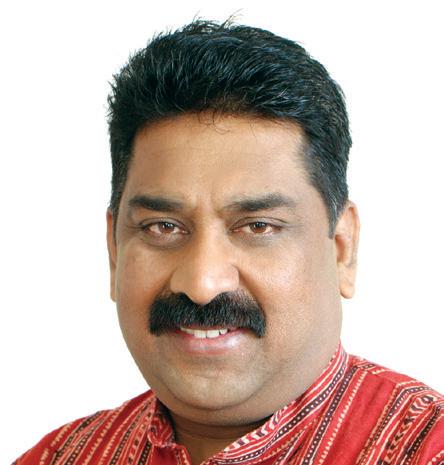
With COVID-19 settling into our lives like old dust, we’ve learnt to be wary of new beginnings. People have grown accustomed to the feeling of moving from one crisis to another. From war to climate change disasters, the world has suffered from multiple catastrophes this year. As always is the case with such critical events, lives lost and an economic crisis were the grim repercussions, with the added threat of a nuclear attack.
To commemorate the 75th year of Indian independence, the Government of India launched ‘India at 75 - Azadi ka Amrit Mahotsav’ from March 12, 2021 to August 15, 2023. Numerous activities were held throughout the country as part of this movement which mobilised people at a large scale. During this time, India’s urban population has grown from 6.2 cr (in 1951) to 49.3 cr (in 2021). And this number is likely to increase rapidly in the coming years according to World Cities’ Report 2022. Which means our governments need to strengthen cities.
This year also was the year of regrowth and rebuilding. After two years of debilitating loss due to the COVID-19 virus, 2022 gave us a chance to continue towards the path of recovery, growth and development. The World Bank recently commended India for the way its economy is growing post-COVID. In light of the economy’s relative resilience to external challenges and “a solid out-turn” in the second quarter of the current financial year, the World Bank increased its GDP growth prediction for India during financial year 2023 (FY23) to 6.9 per cent from 6.5. Auguste Tano Kouame, World Bank’s Country Director in India has said, “India’s economy has been remarkably resilient to the deteriorating external environment, and strong macroeconomic fundamentals have placed it in good stead compared to other emerging market economies.” He’s also stressed on the need to exercise caution as adverse international developments are still ongoing.
Environmental challenges have been a global problem for many years now, but this year finally the world took notice of its gravity and committed in real terms to fighting climate change. The annual Climate Change conference COP27 held in Sharm elSheikh this year was a momentous occasion in that respect where countries of the world came together to establish a climate fund for developing nations grappling with climate disasters. The United Nations General Assembly even declared a clean environment a human right. While the resolution may not be binding, it is hoped that countries of the world will be moved towards adopting this in their constitutions.
The coming year will see India’s G20 presidency. Hosting the G20 summit is an important event for India amidst a tumultuous geopolitical climate since it is a challenging feat on diplomatic and political fronts. The year finally ends with the threat of another wave of COVID-19 looming on the horizon. If the reports from China are anything to go by, we need to buckle up for the new year indeed!
























Urban Update is a leading magazine on sustainable development of cities brought out by All India Institute of Local Self-Government (AIILSG). Bringing together the experience of the multilateral sector with that of the private sector and the local governments themselves, the magazine focuses on the challenges and solutions for city leaders and local governments.
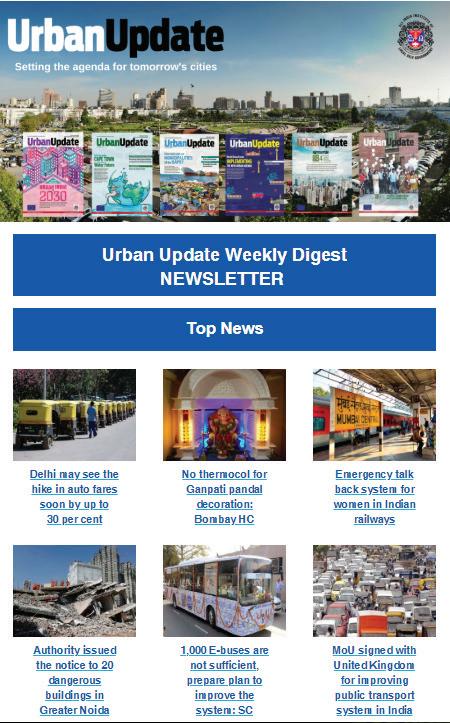
Urban Update plays a special role — that of a primary, indispensable link among stakeholders that nurtures community. A wellspring of writing and imagery reinforces our vision of evangelizing Urban Infrastructure, Governance, Culture and Sustainability.



